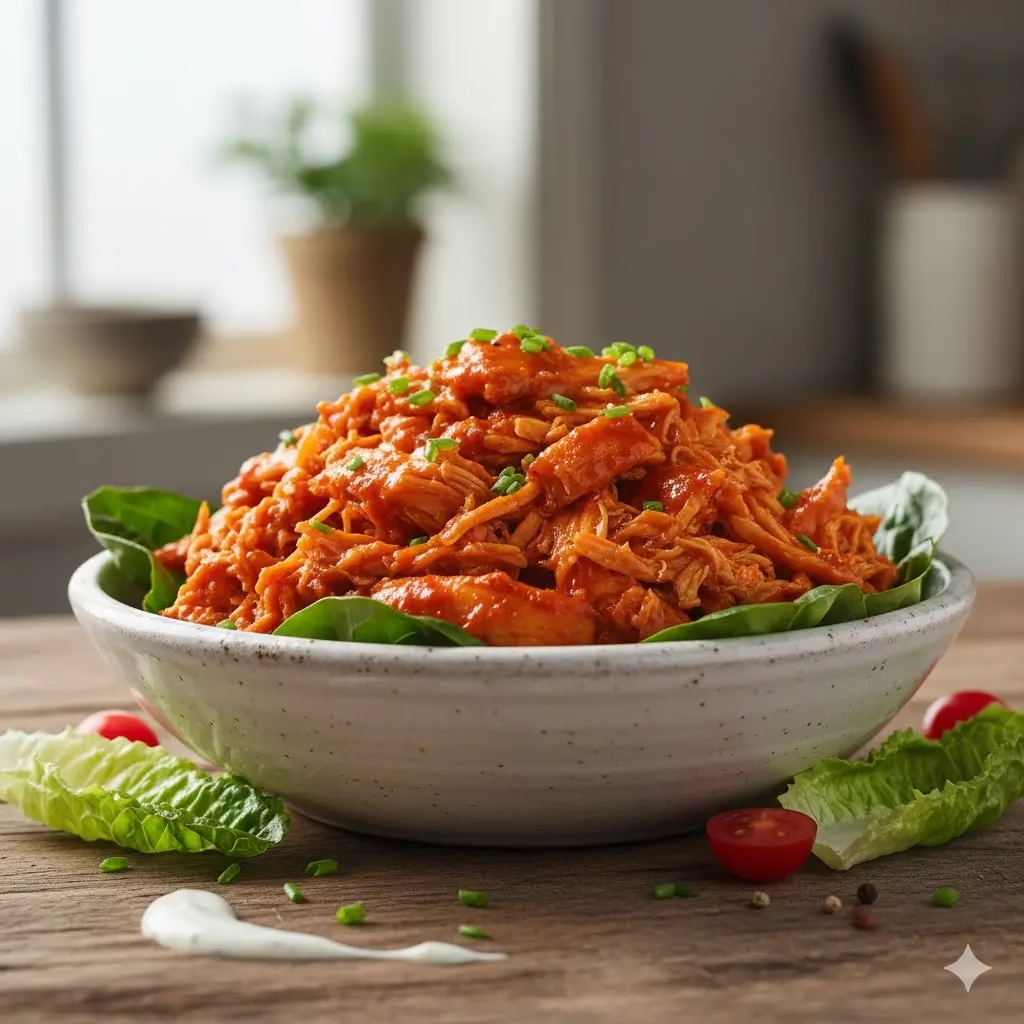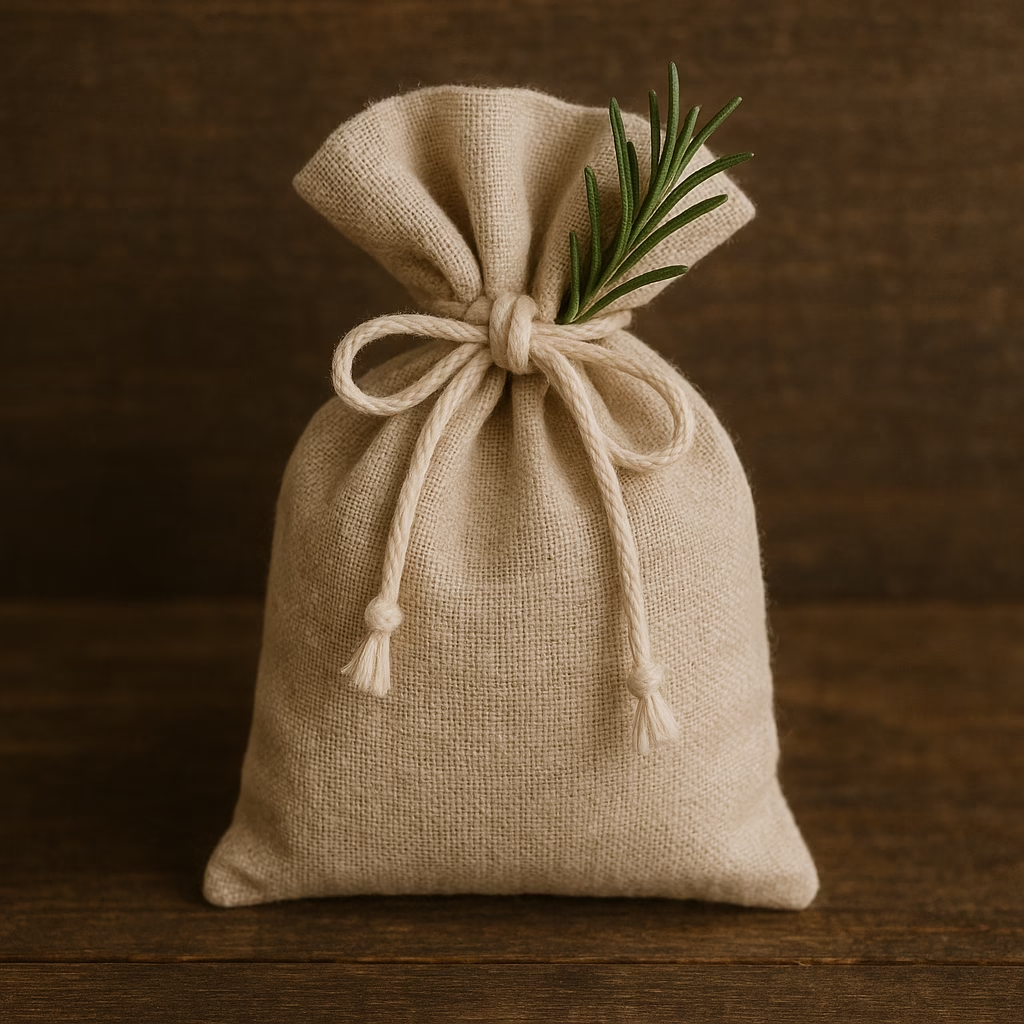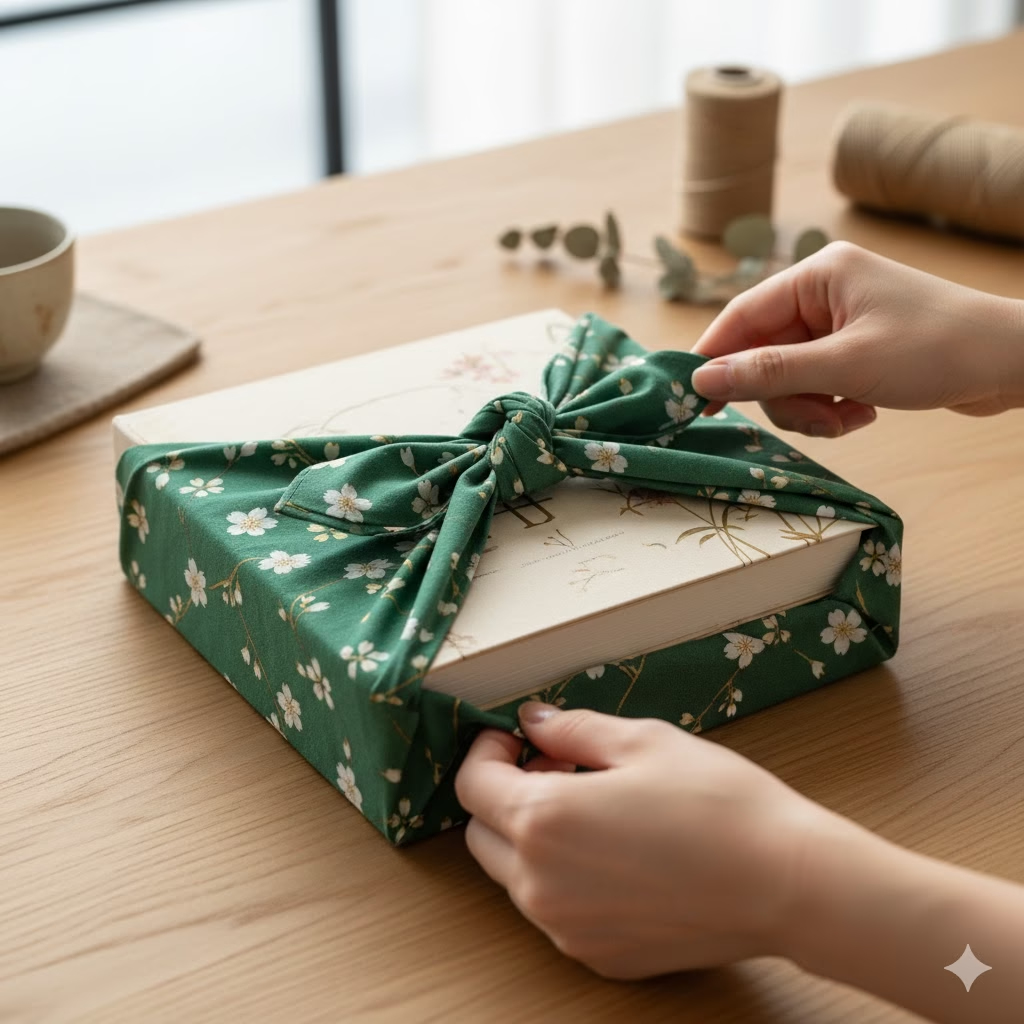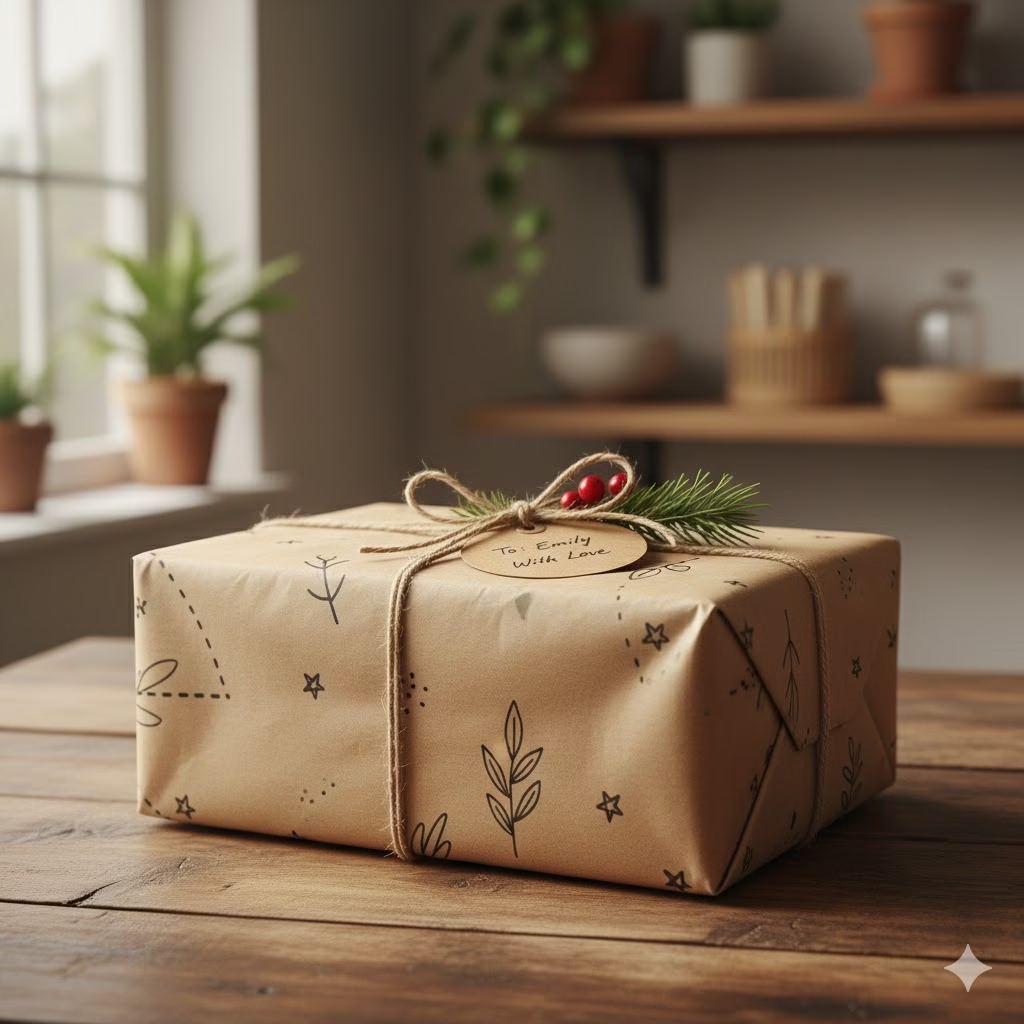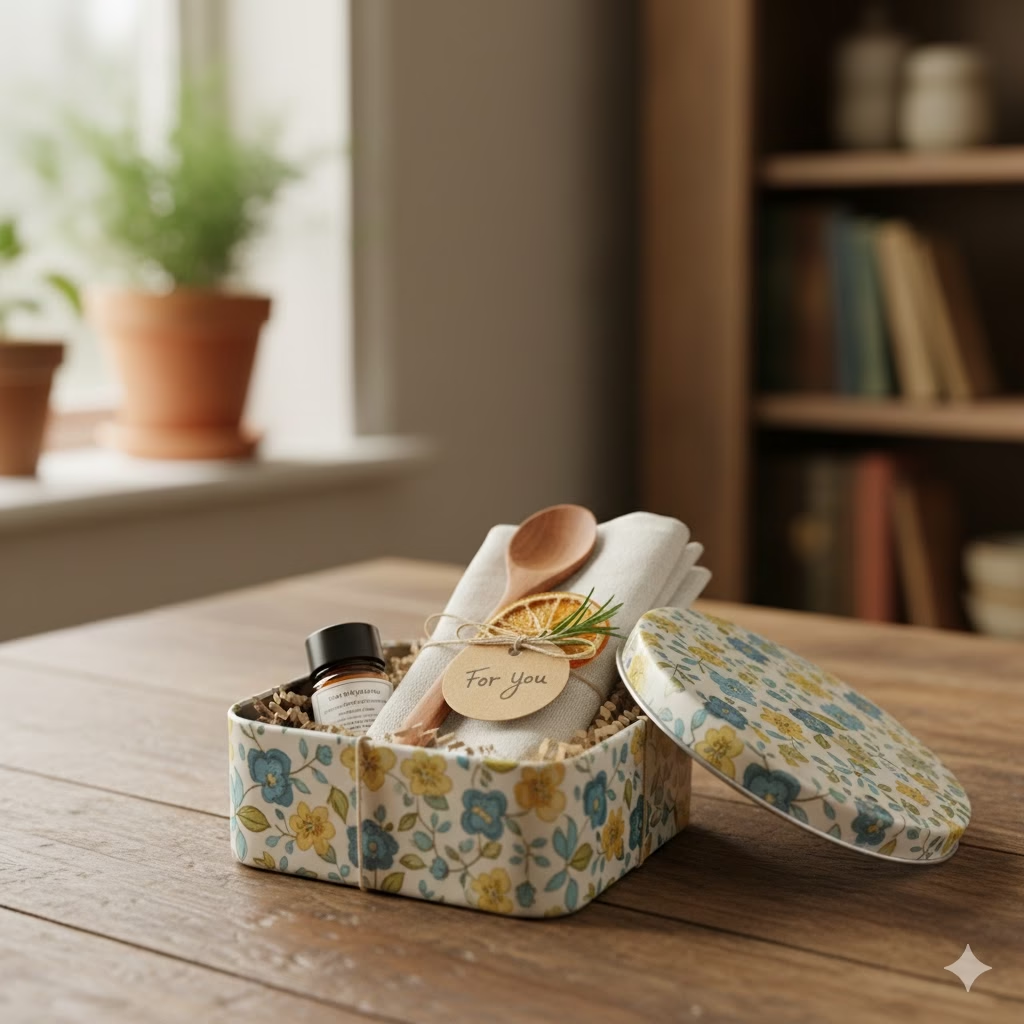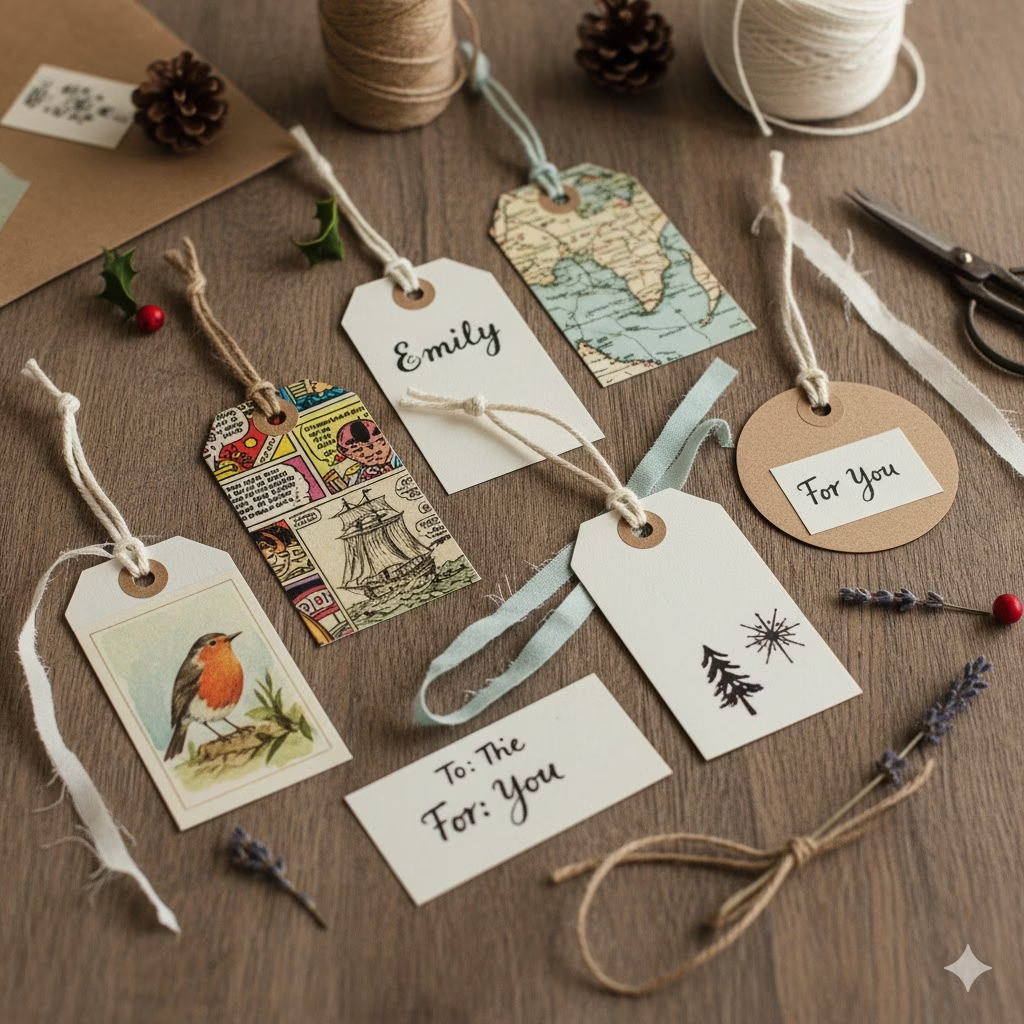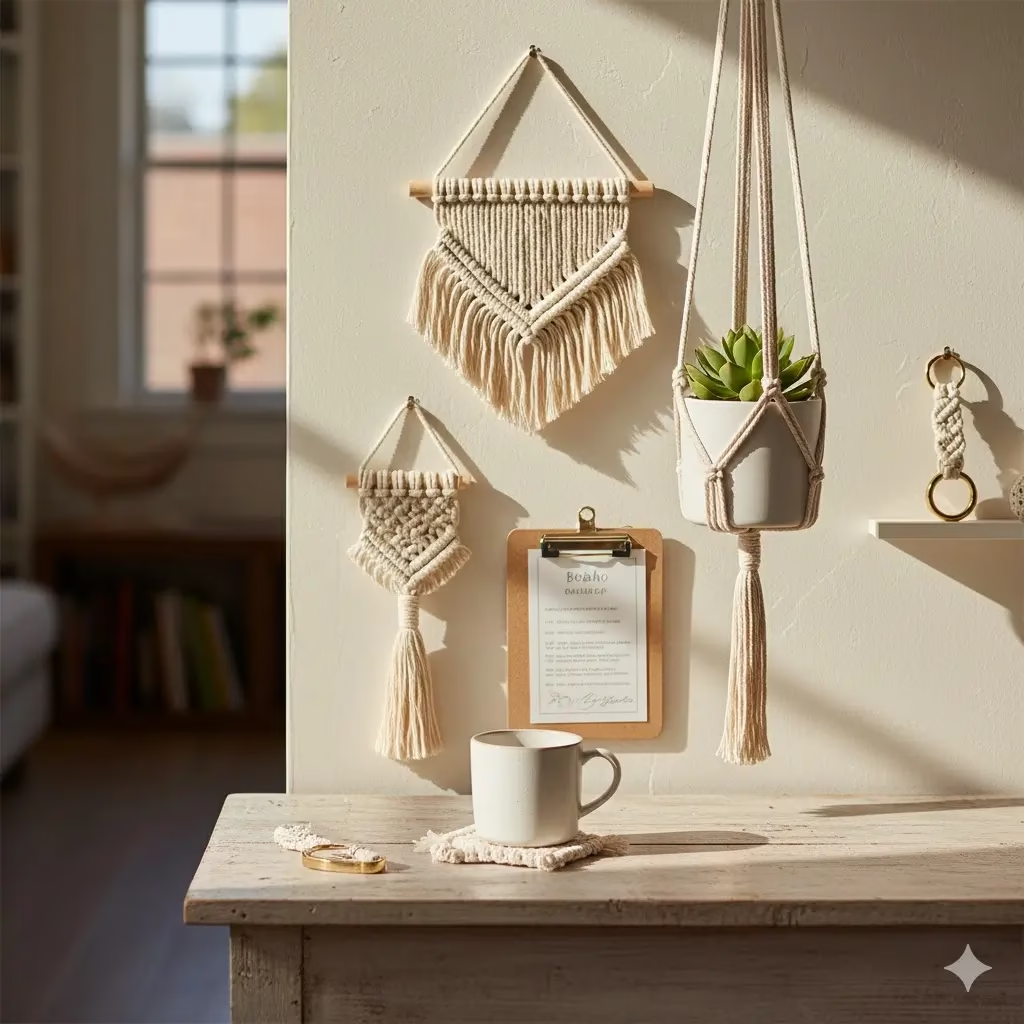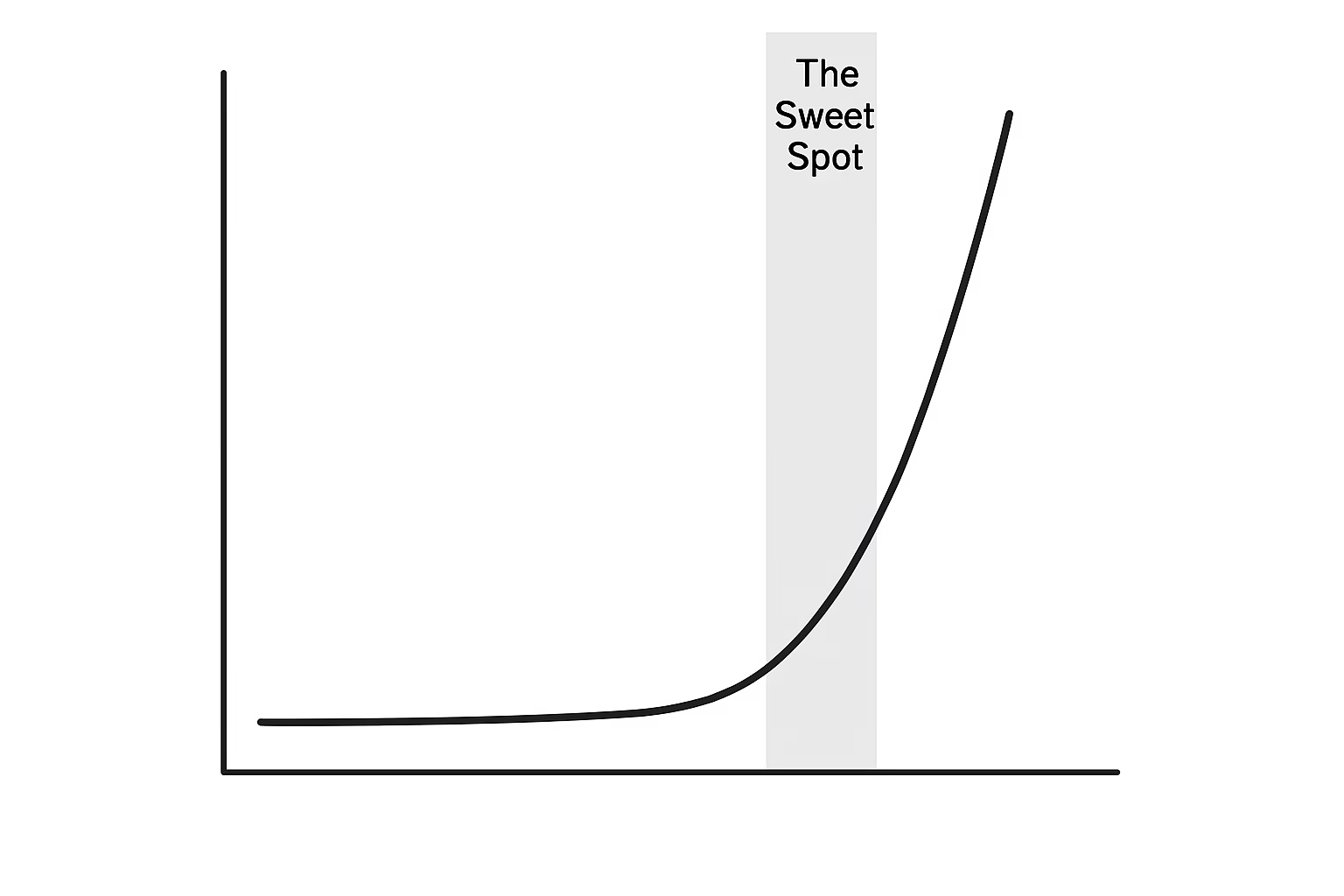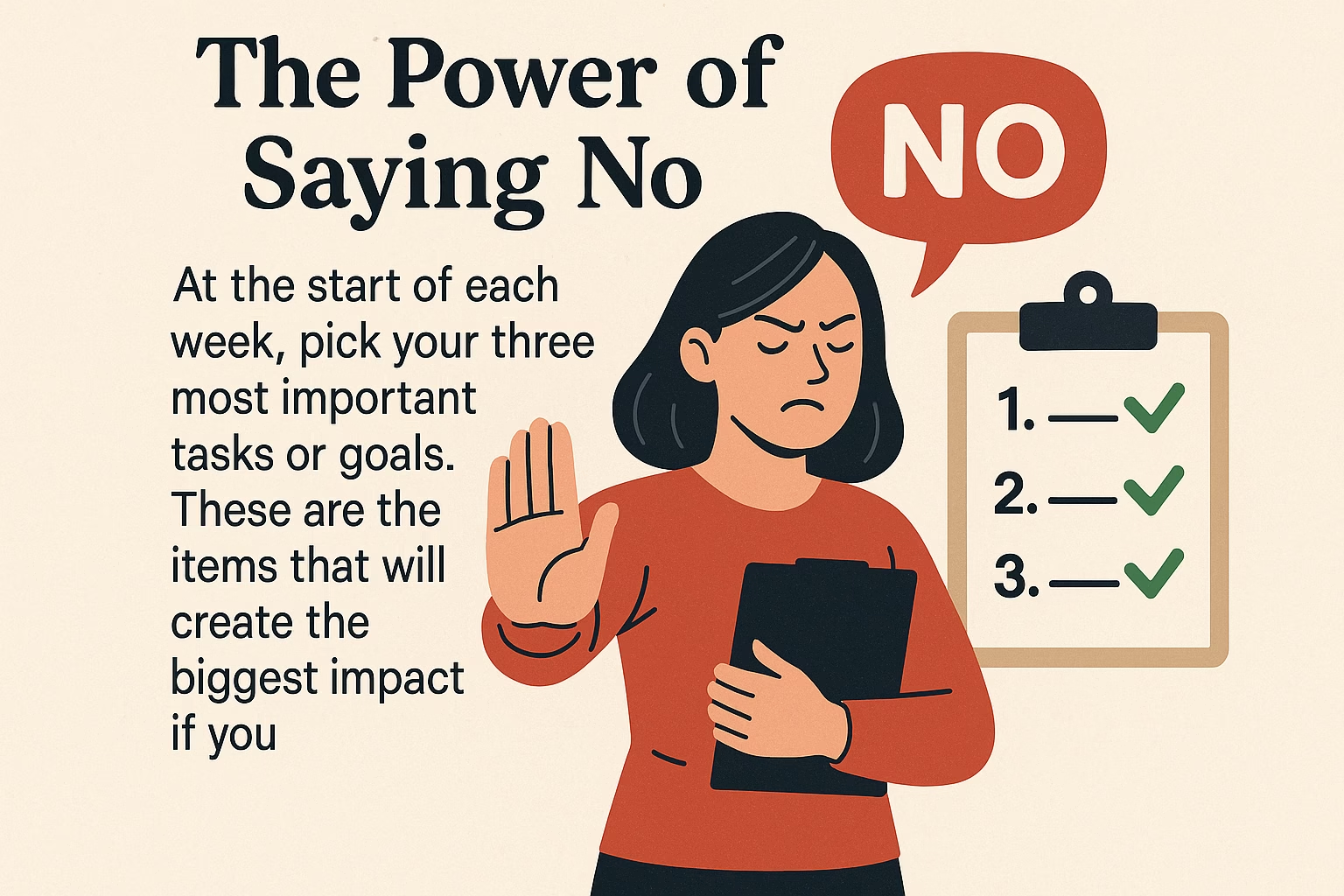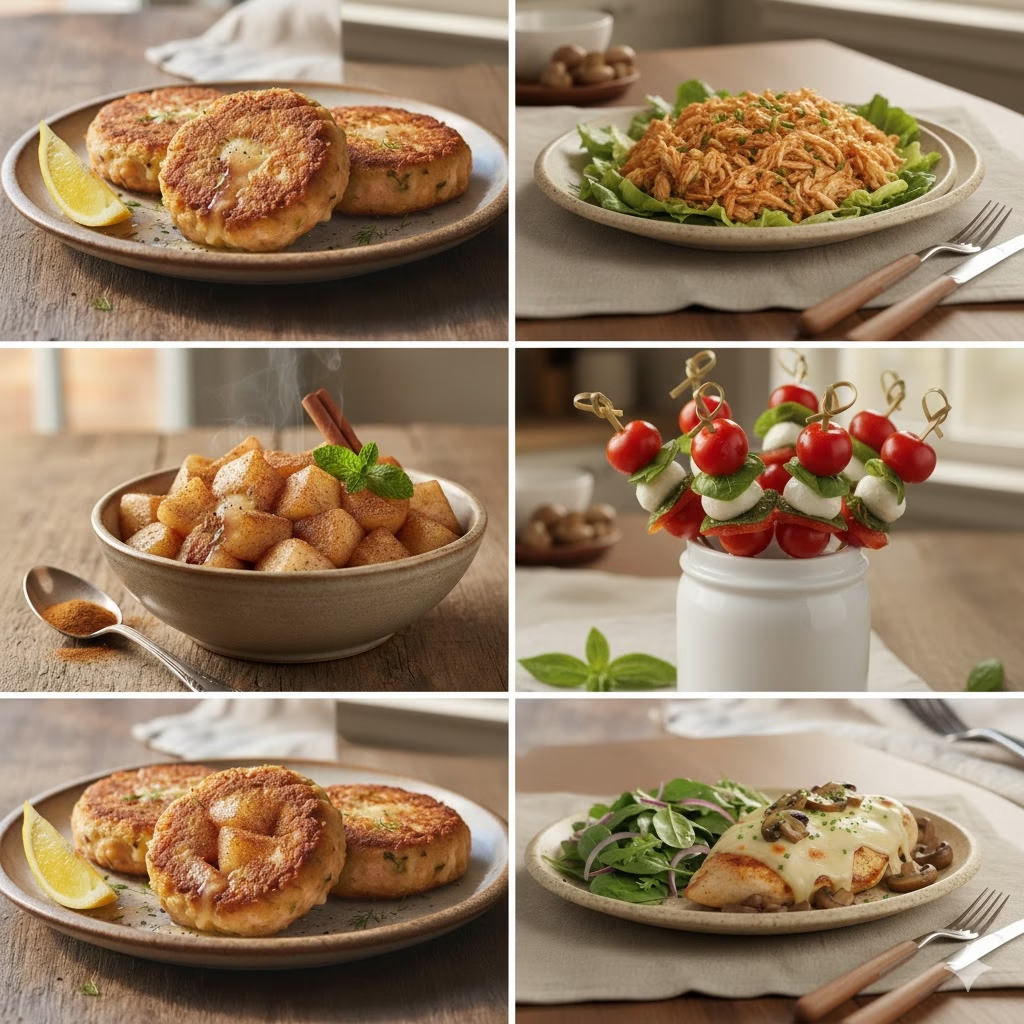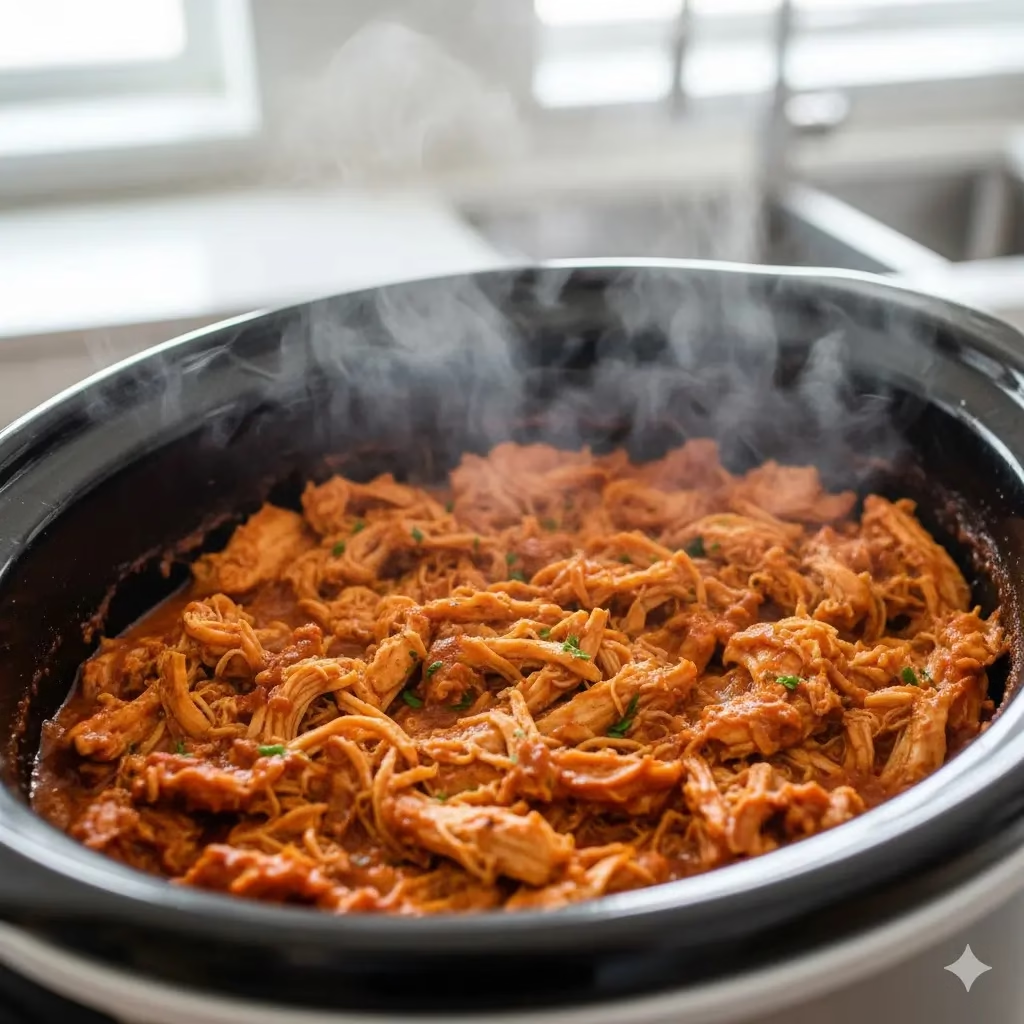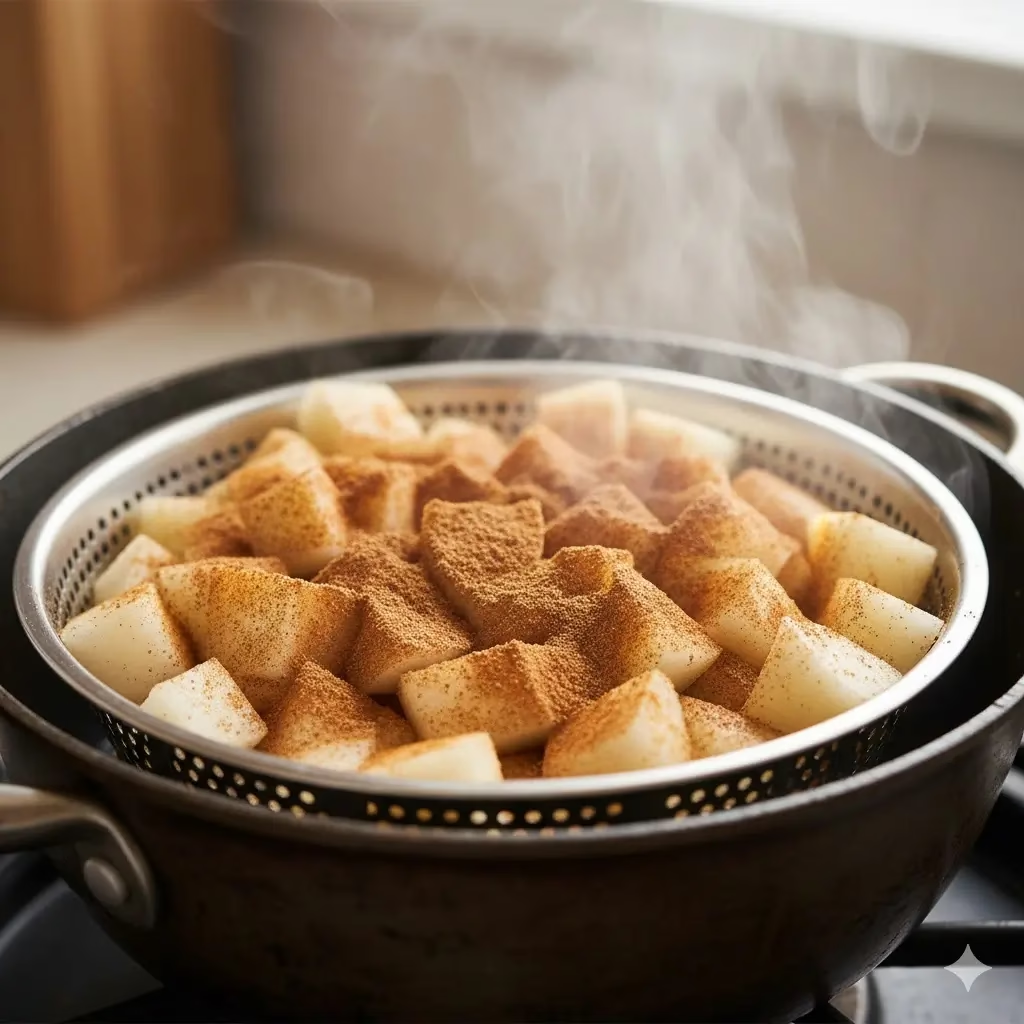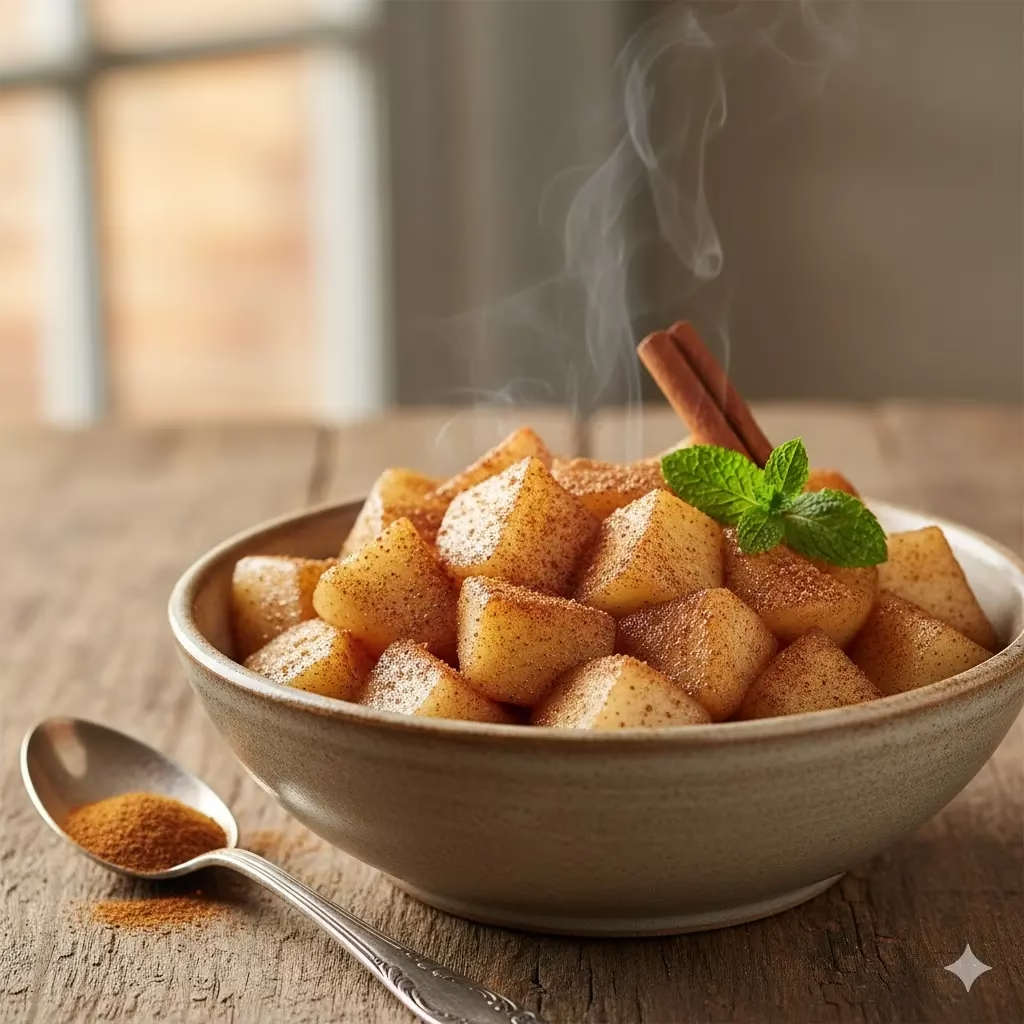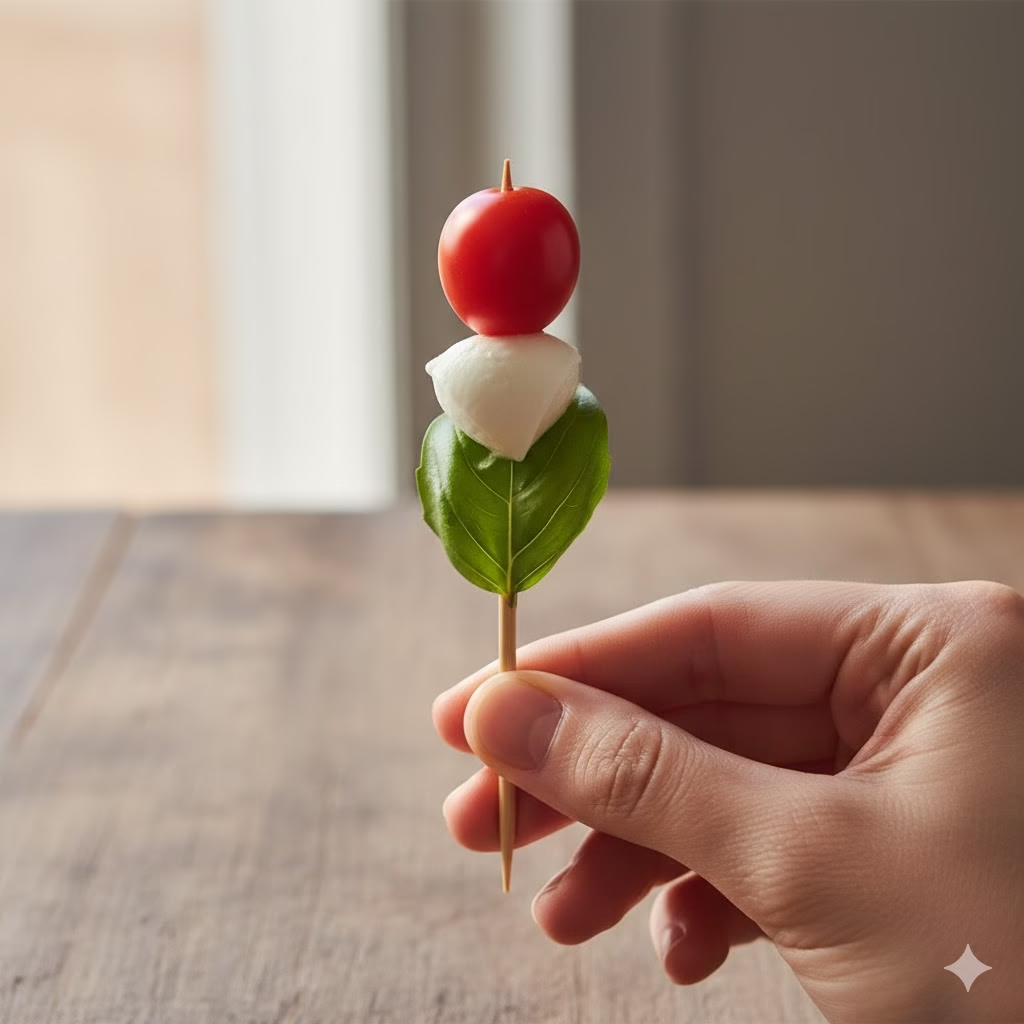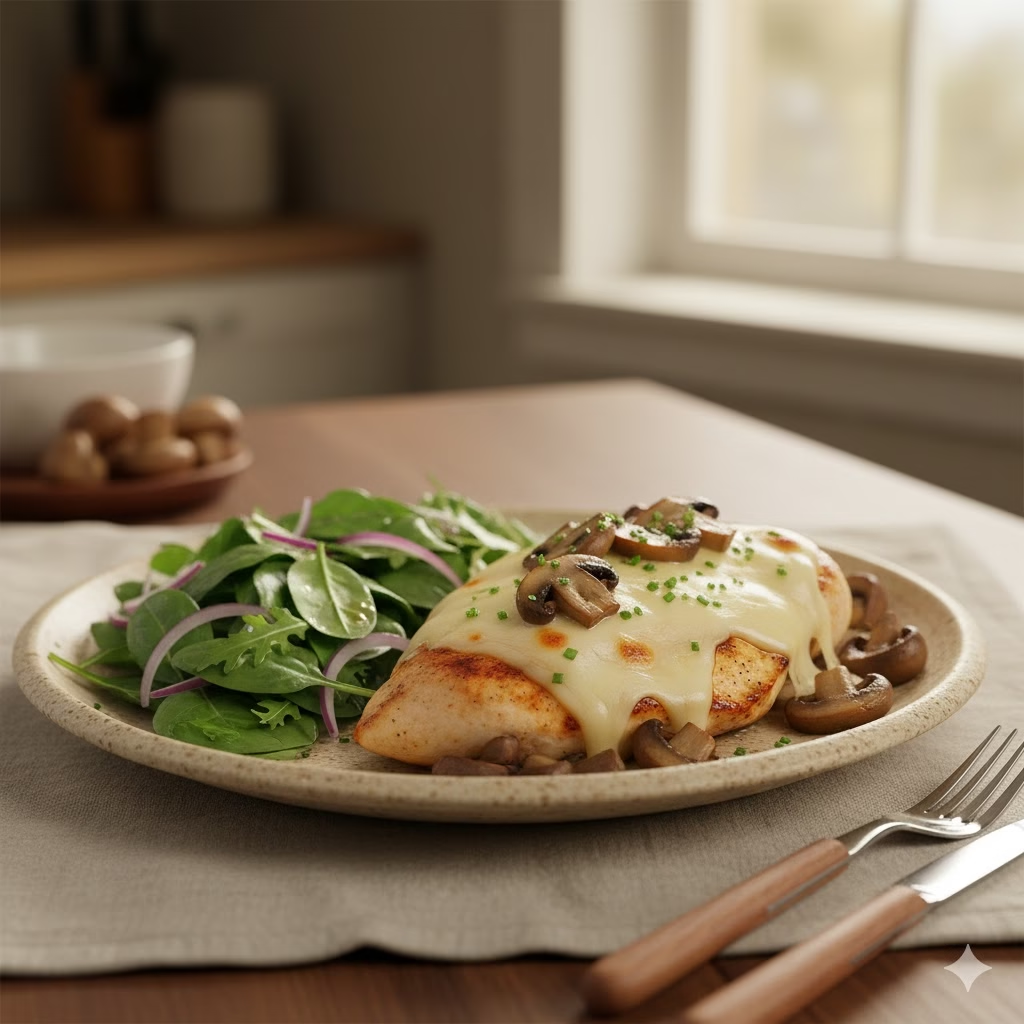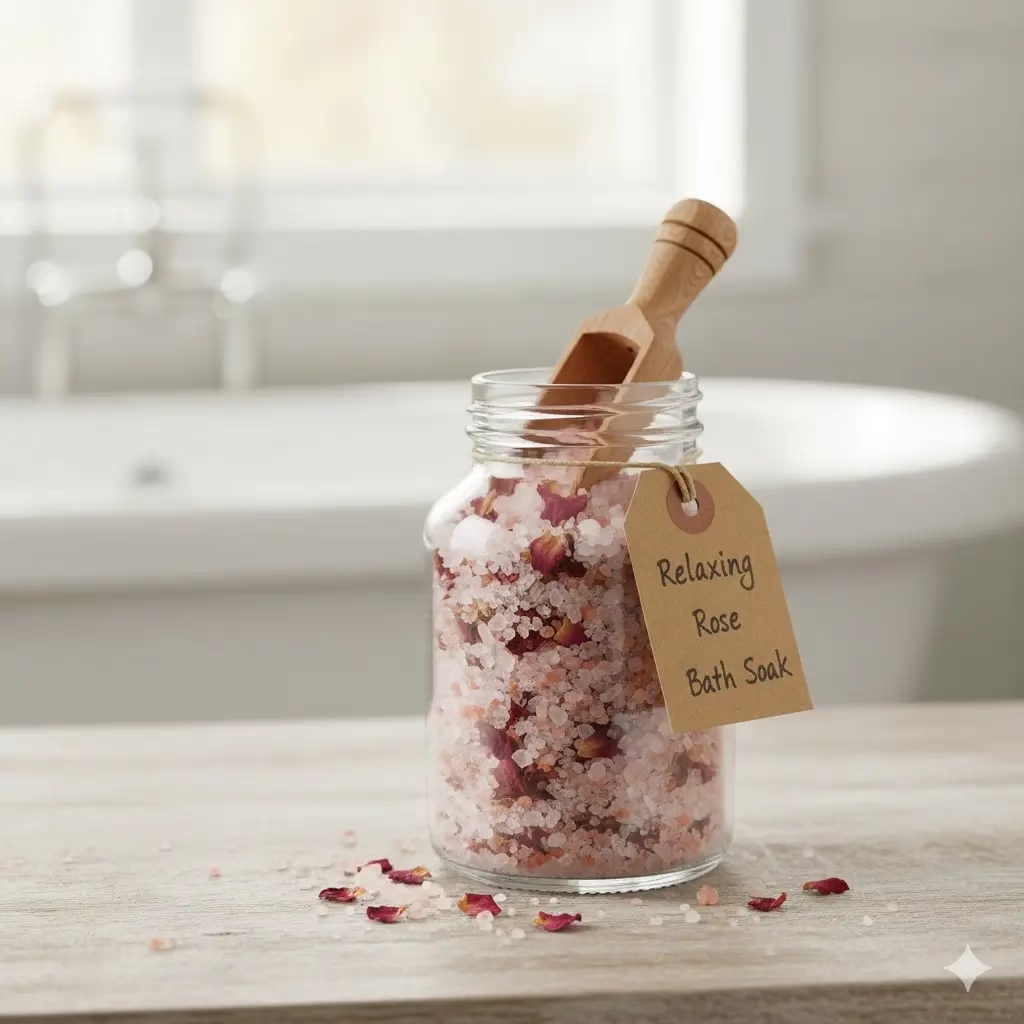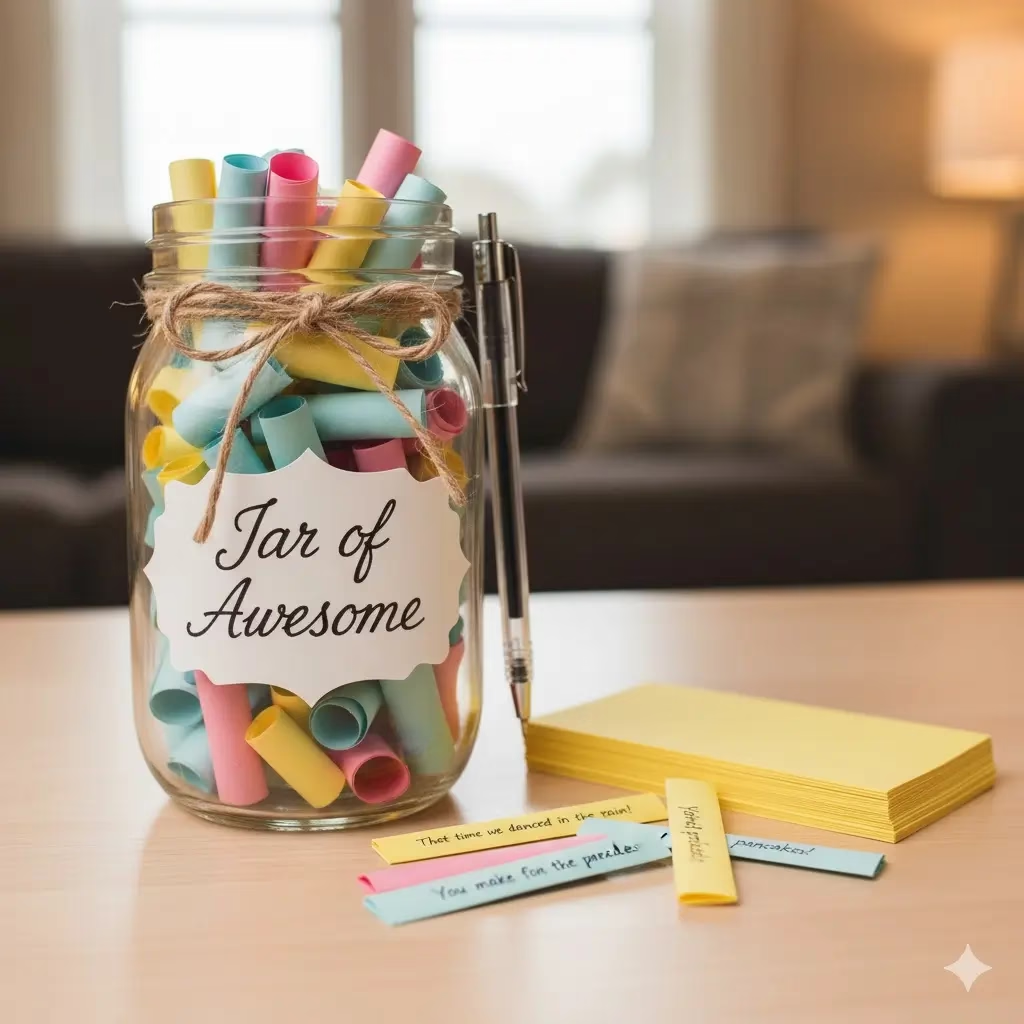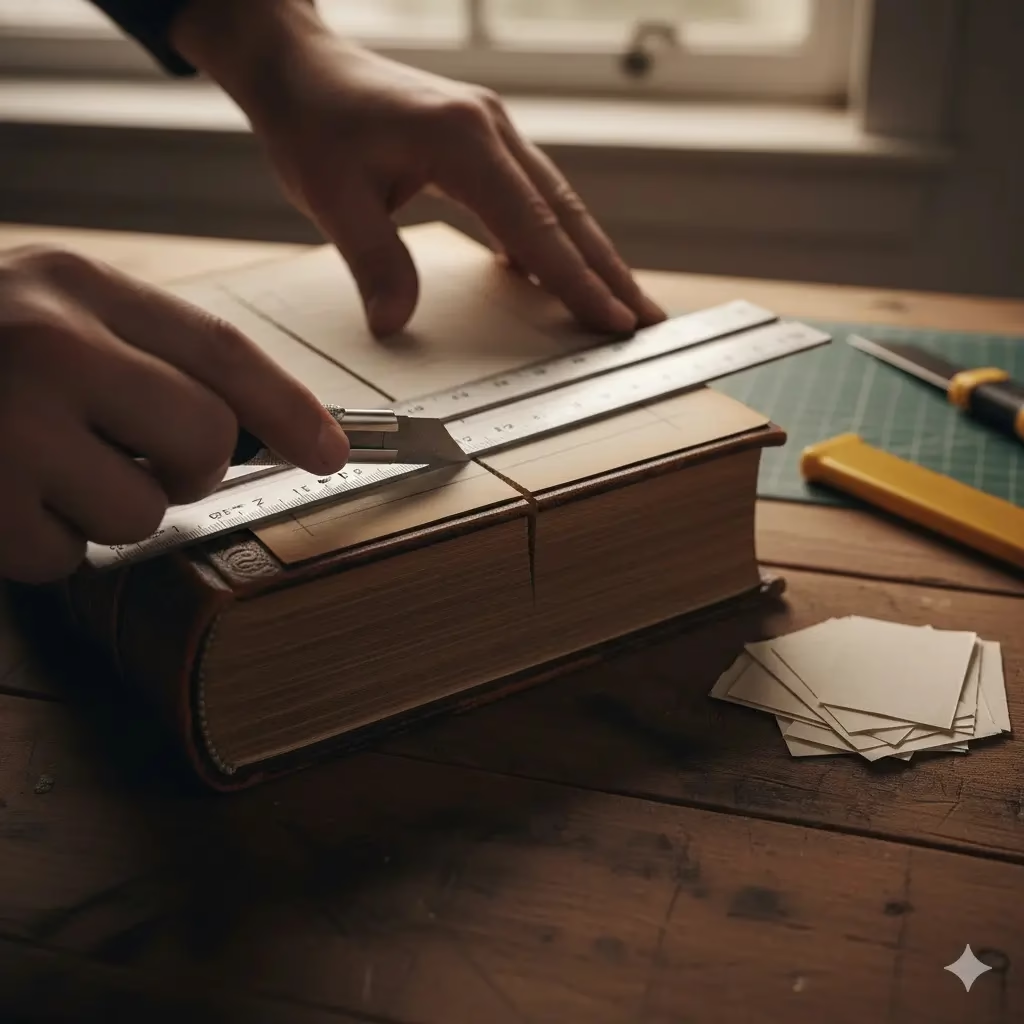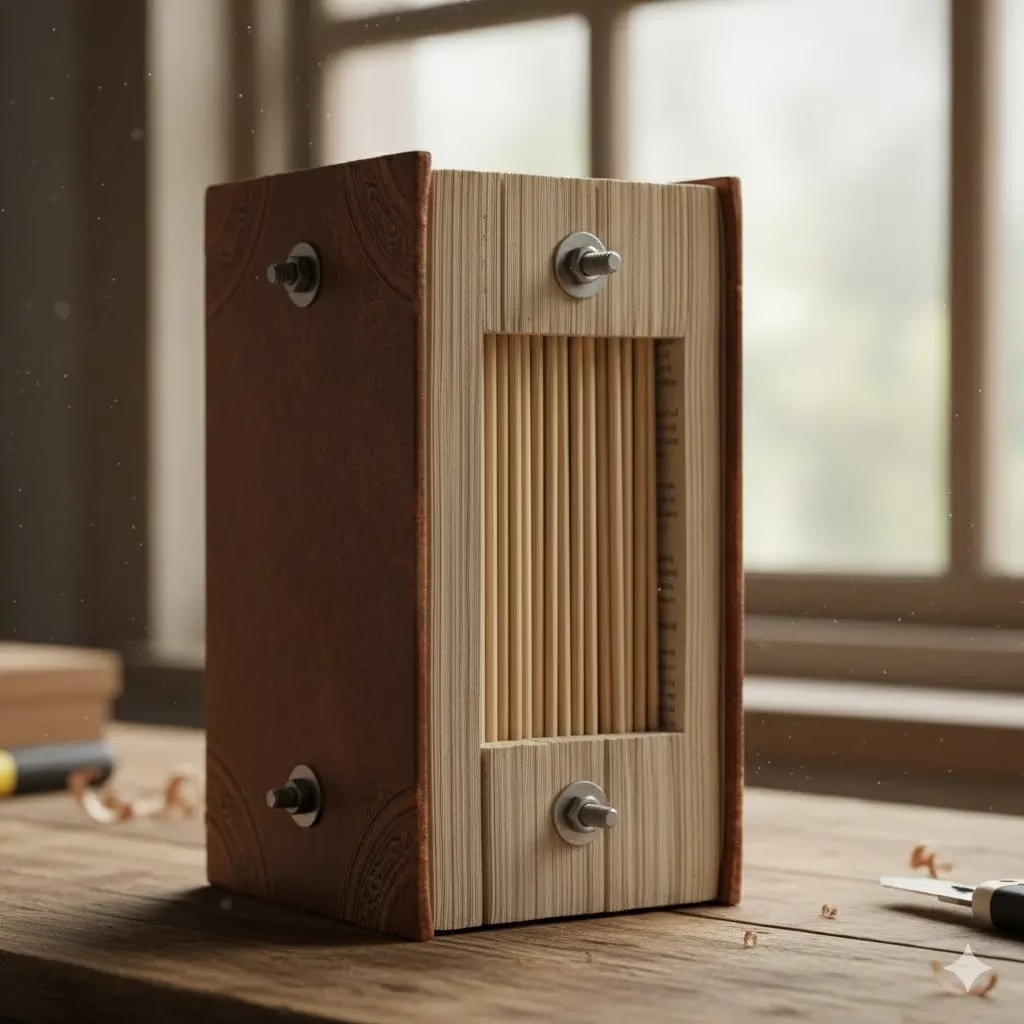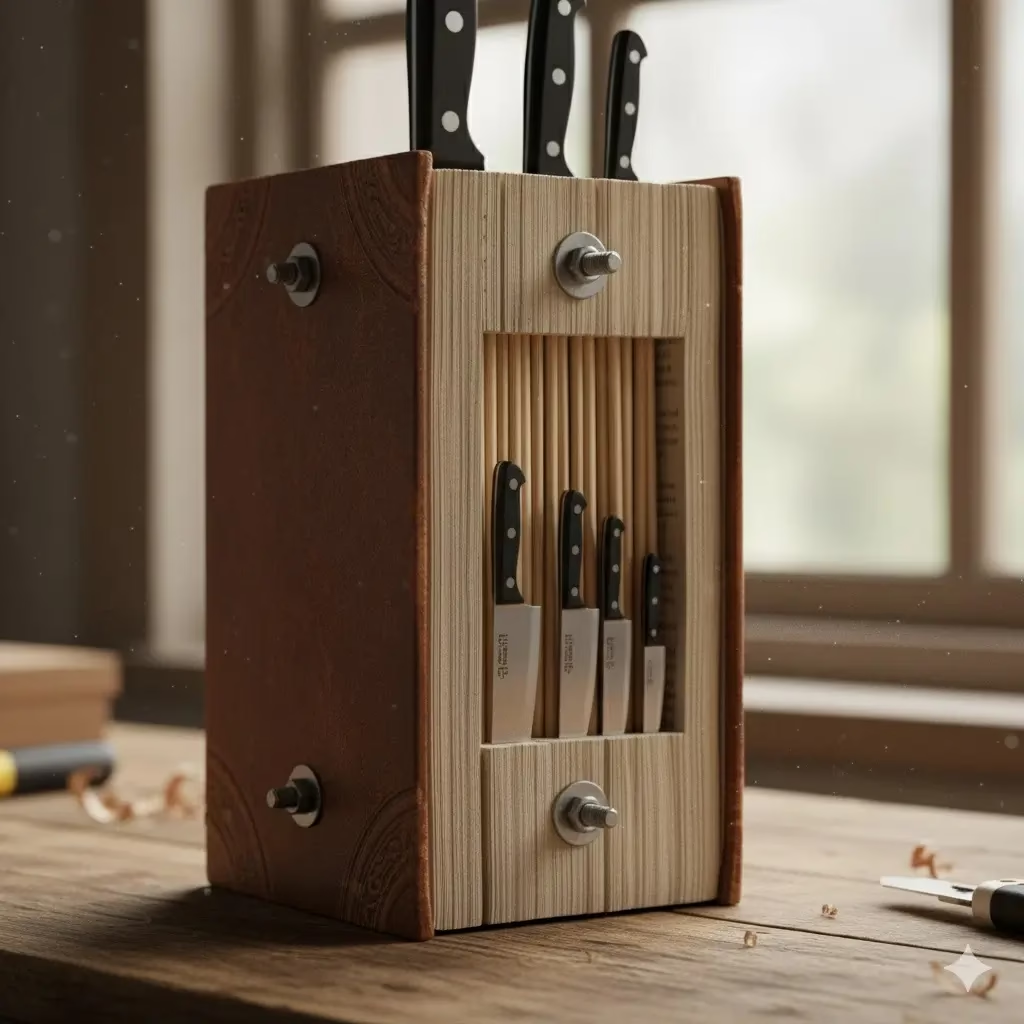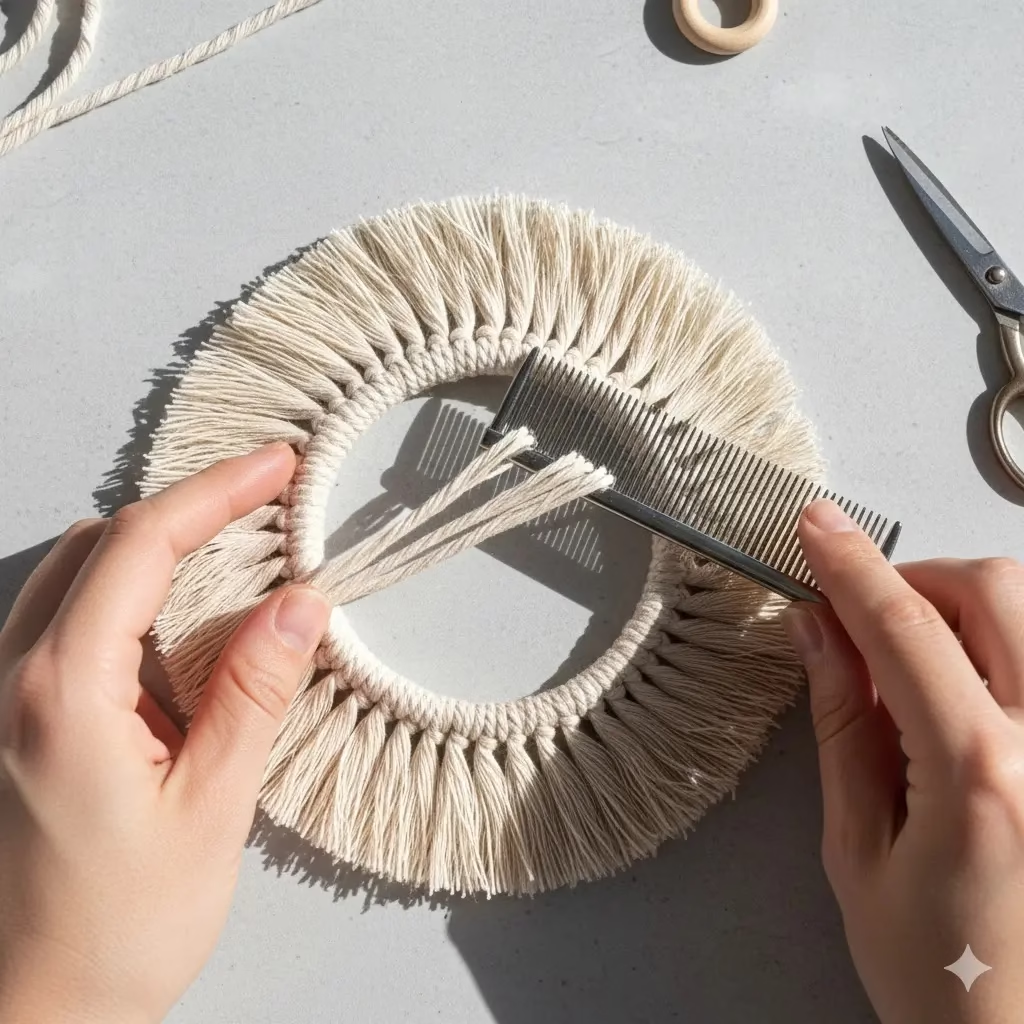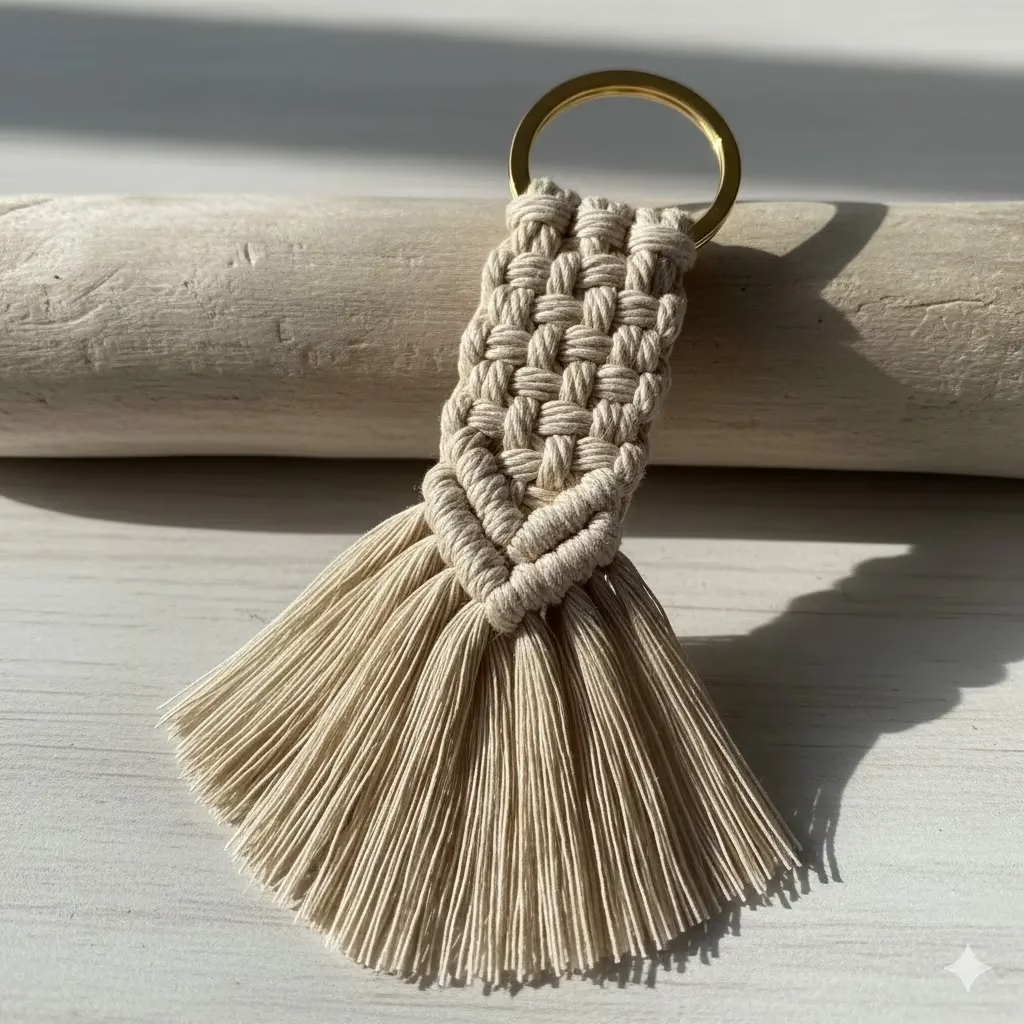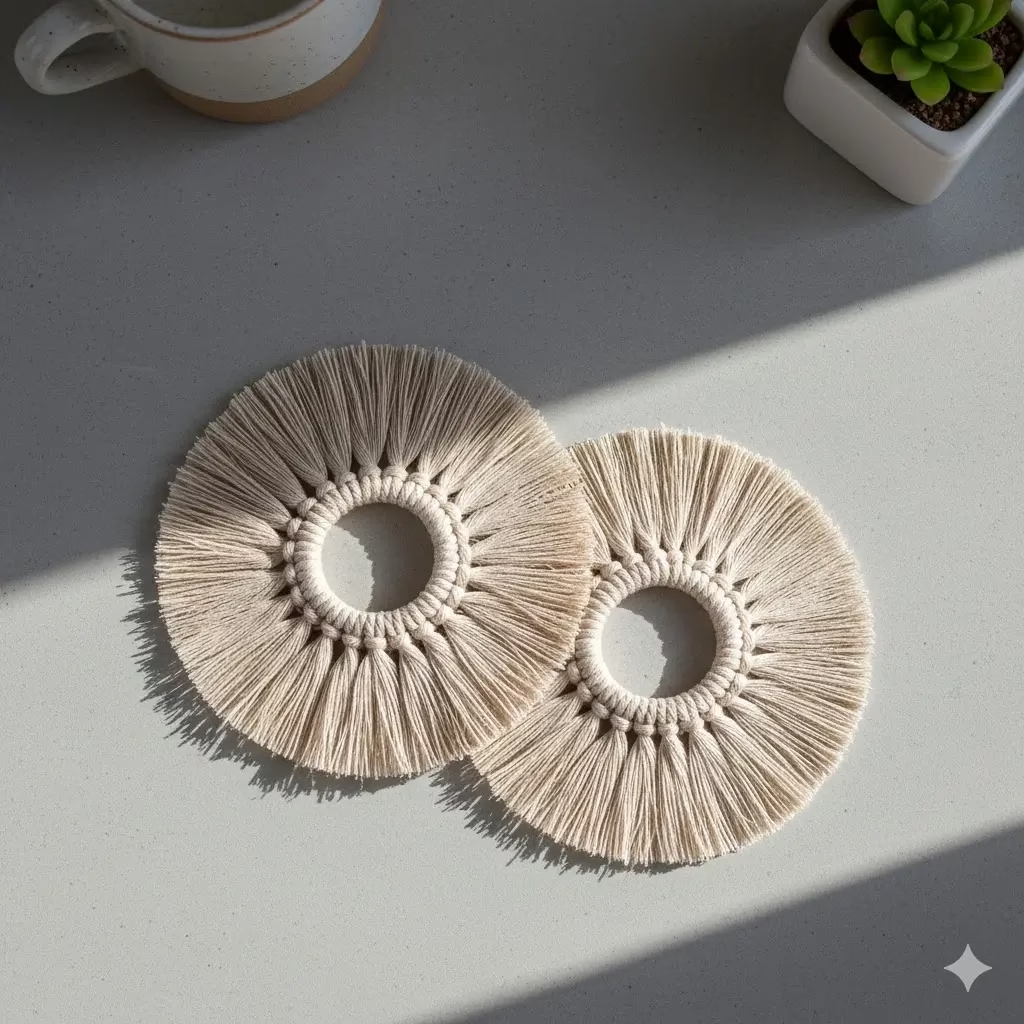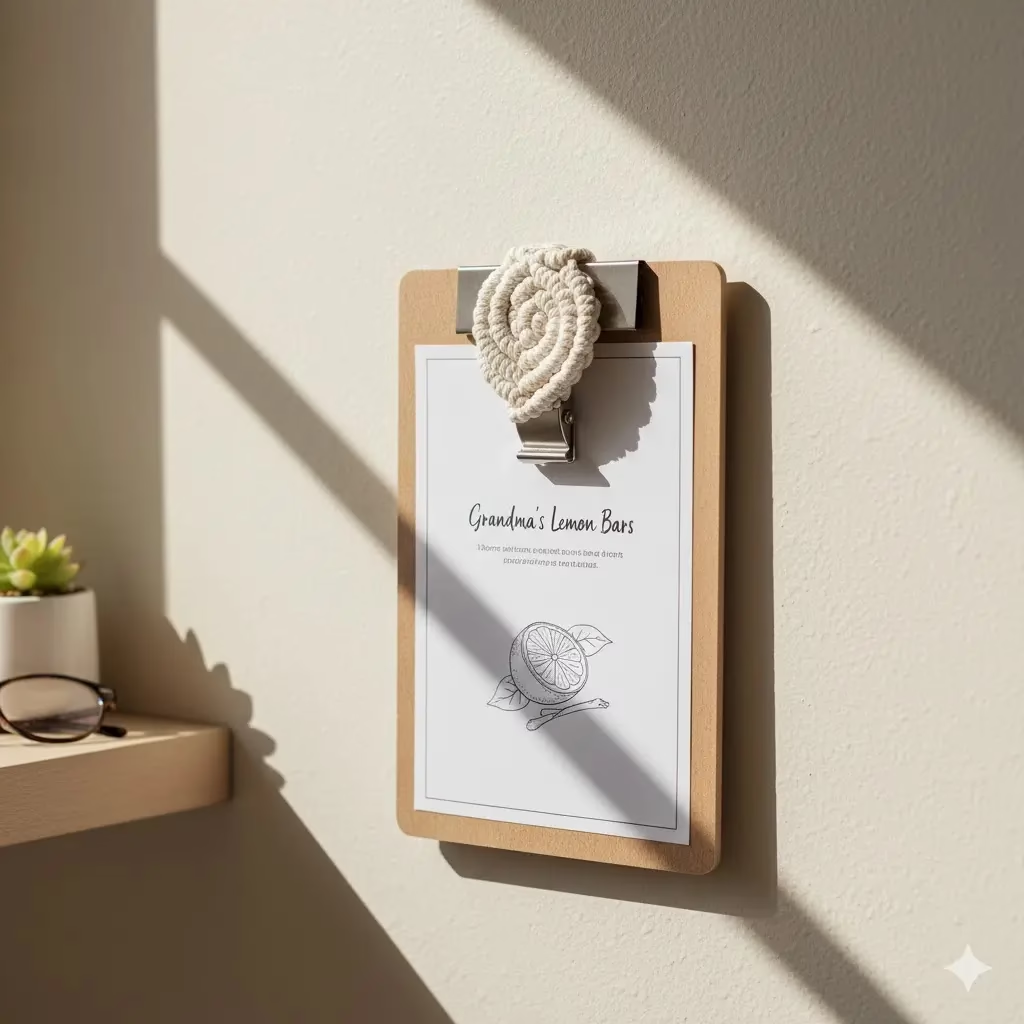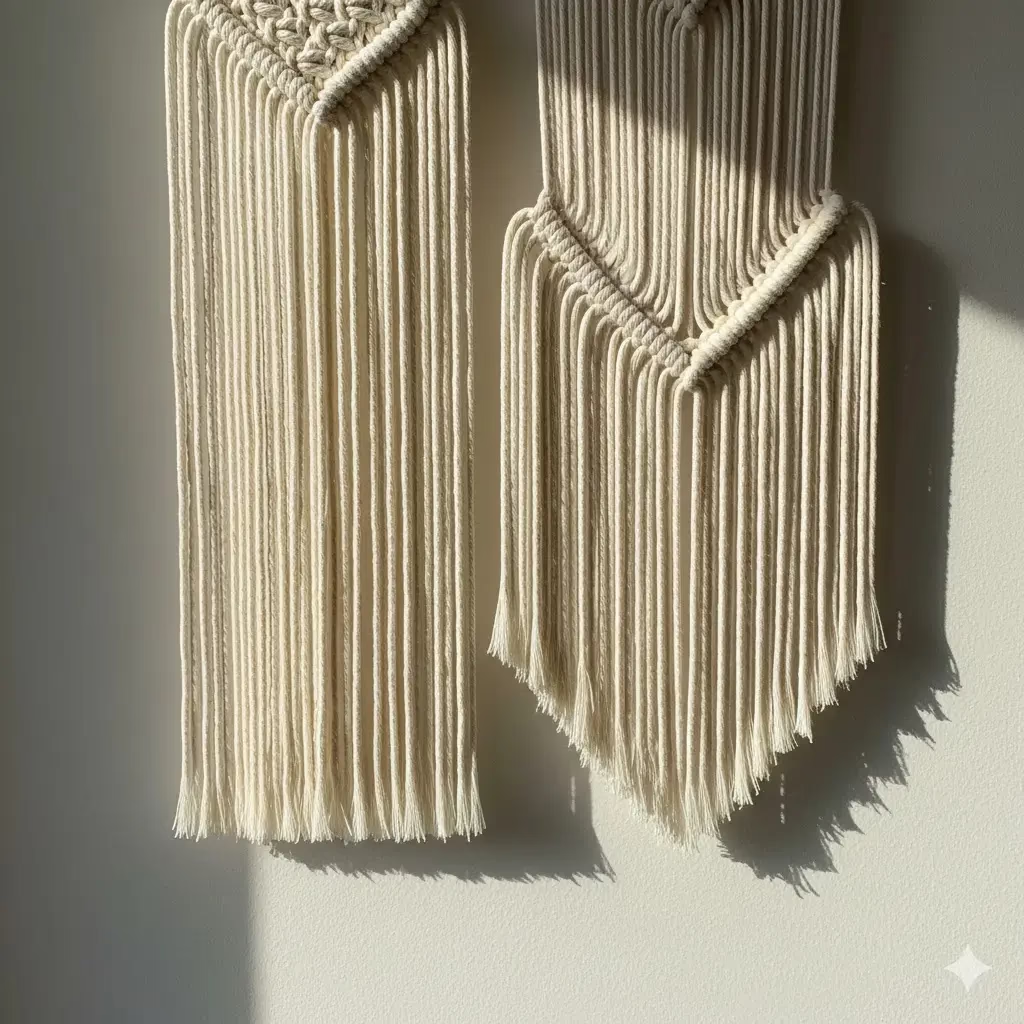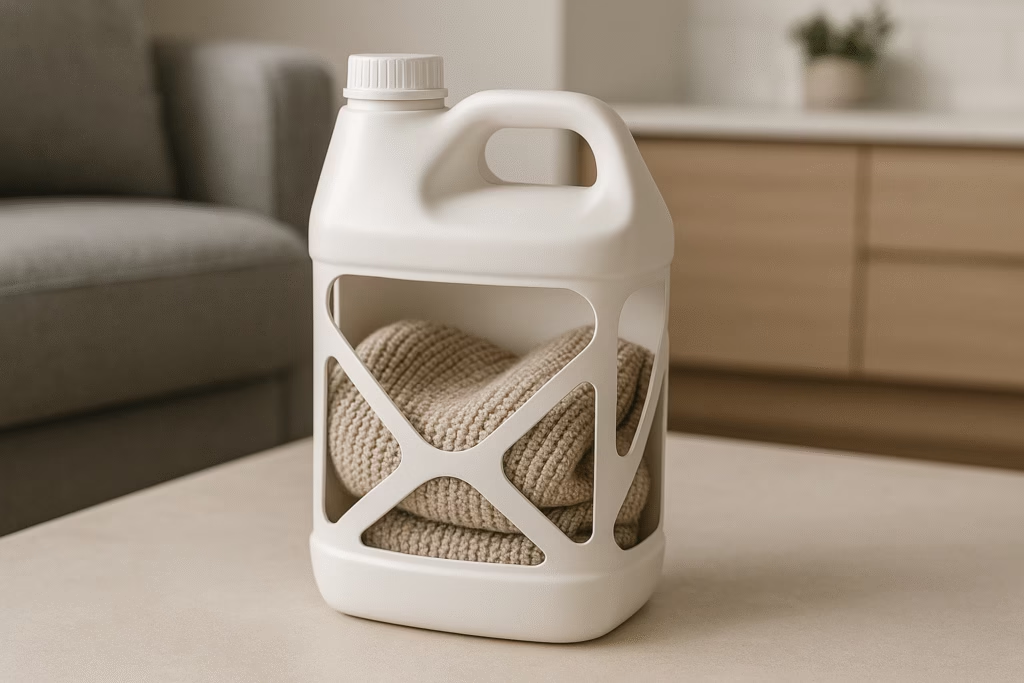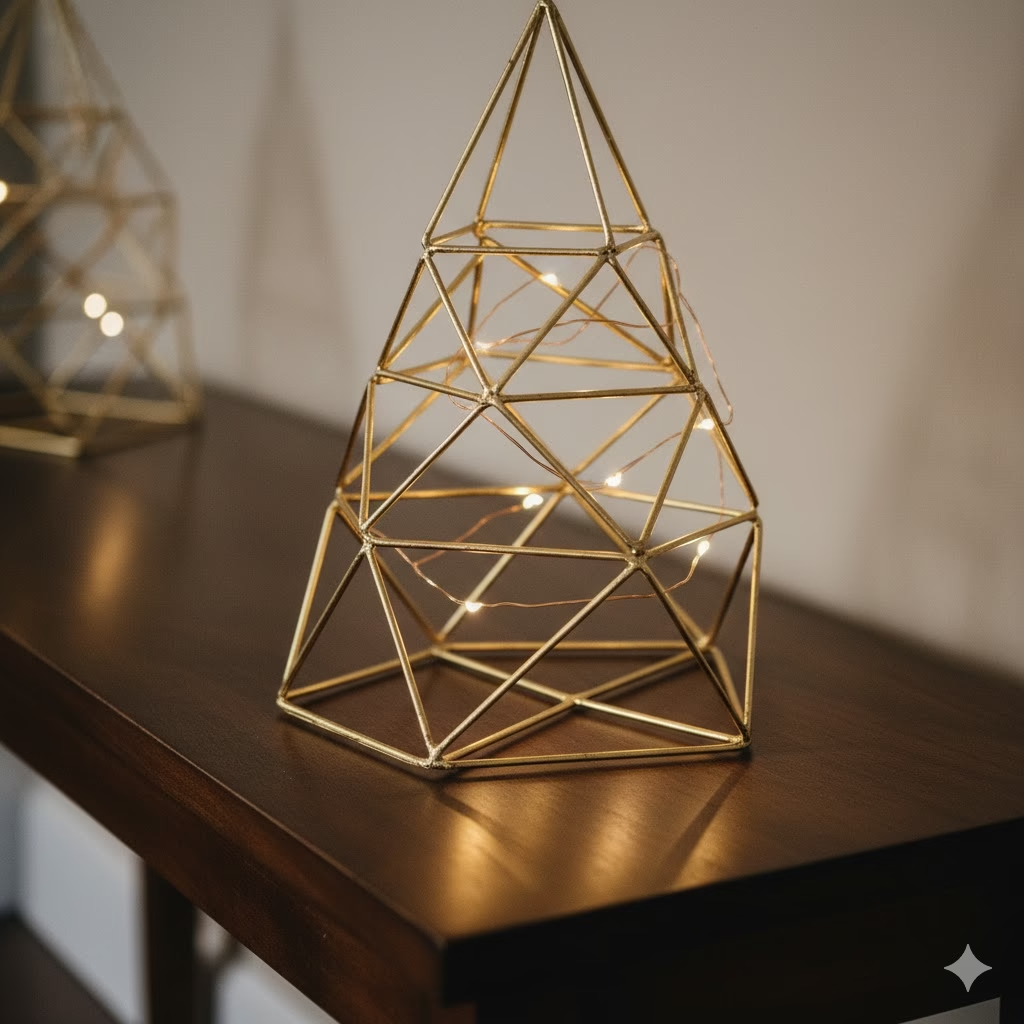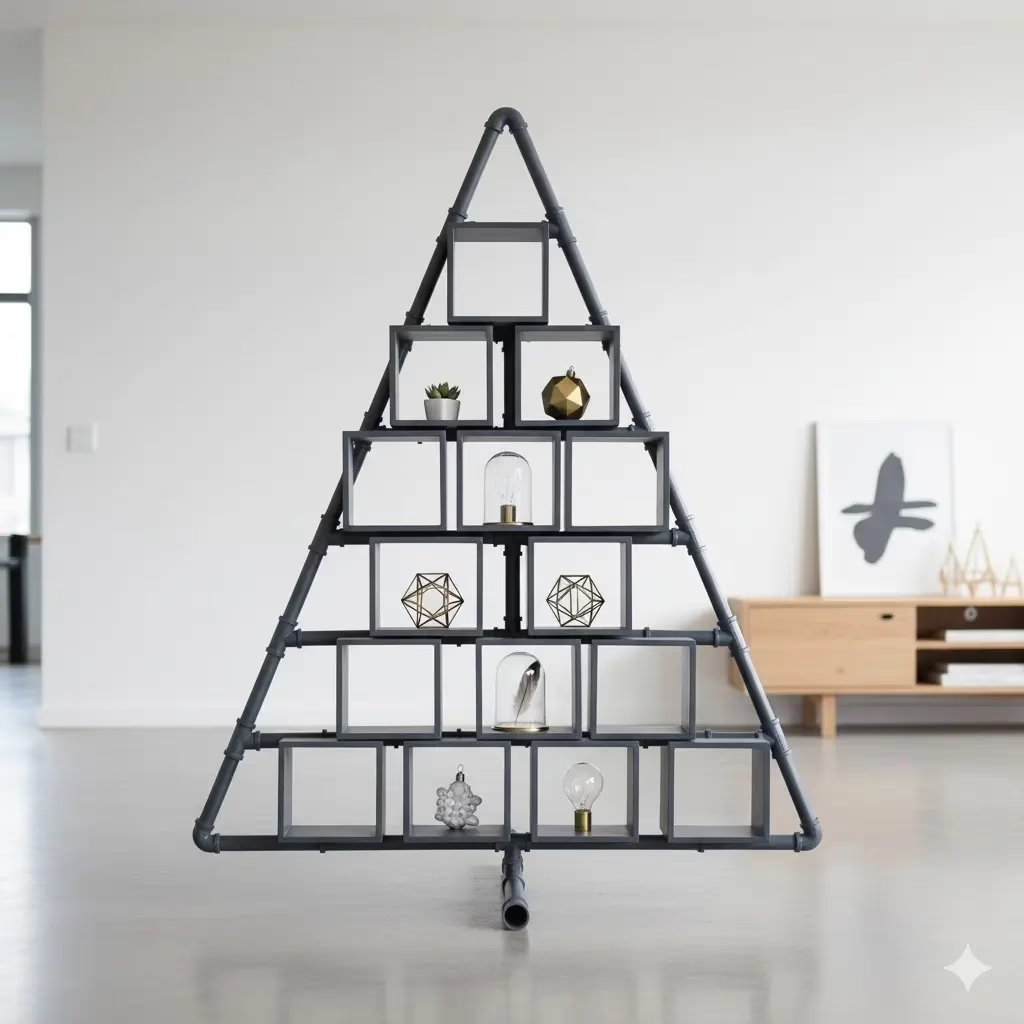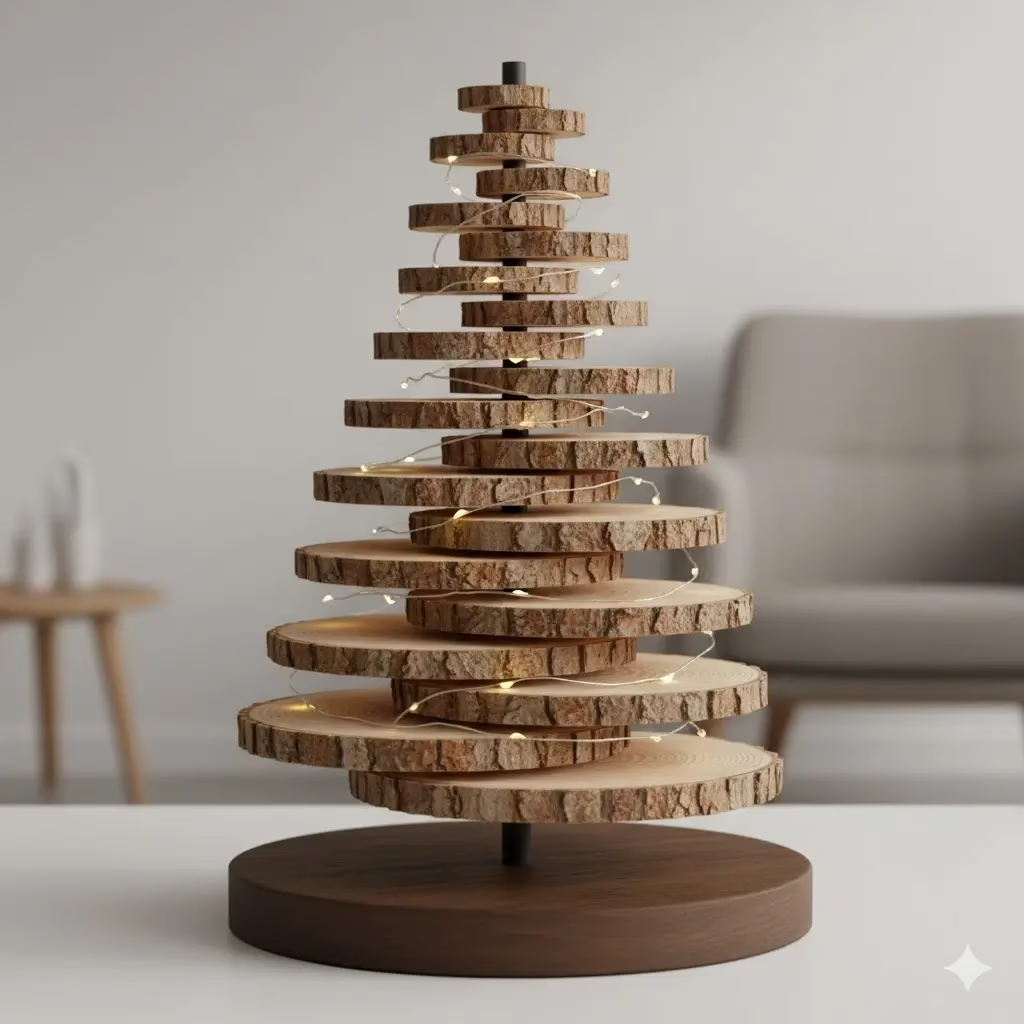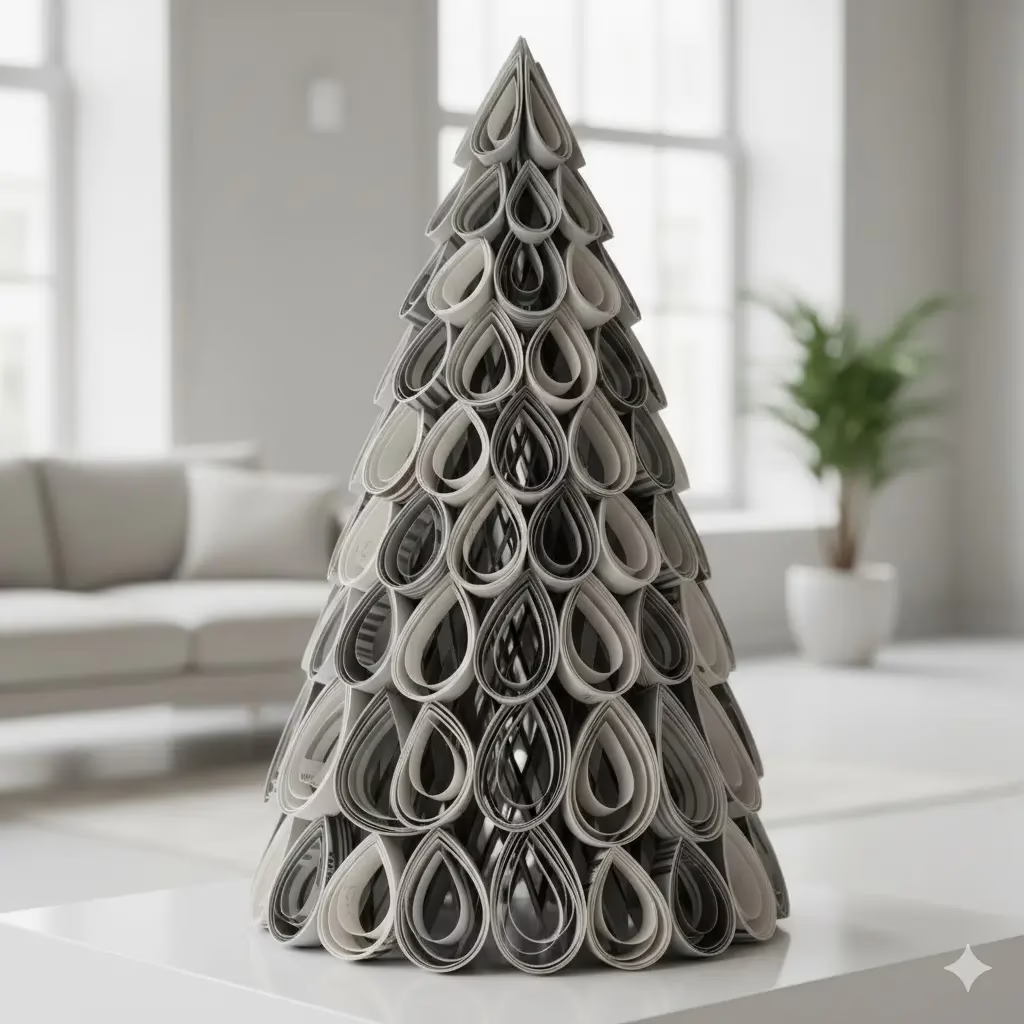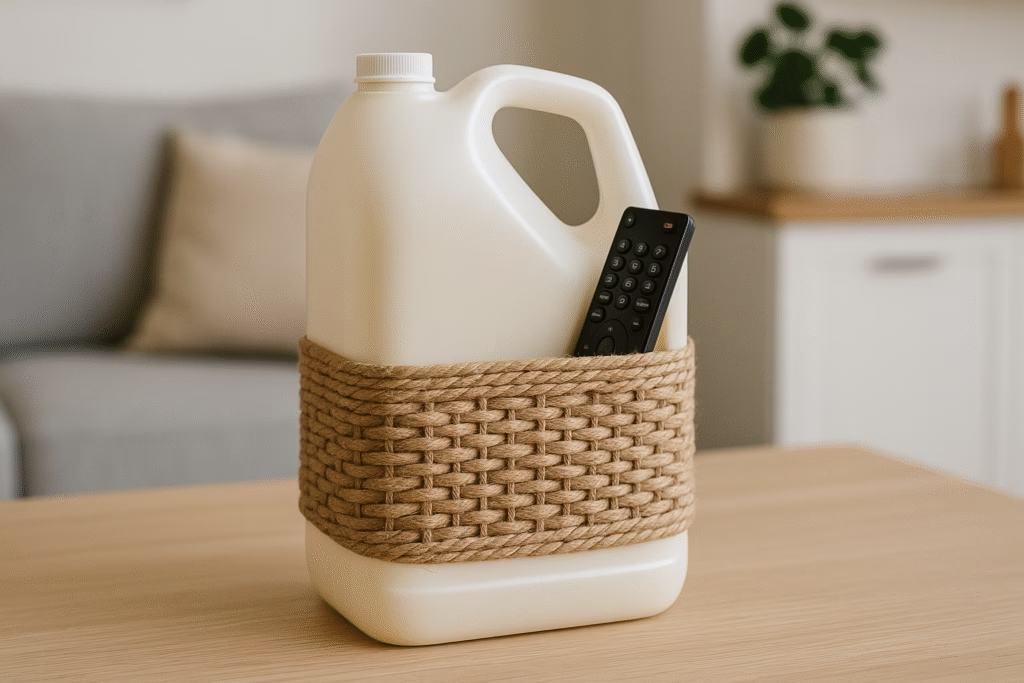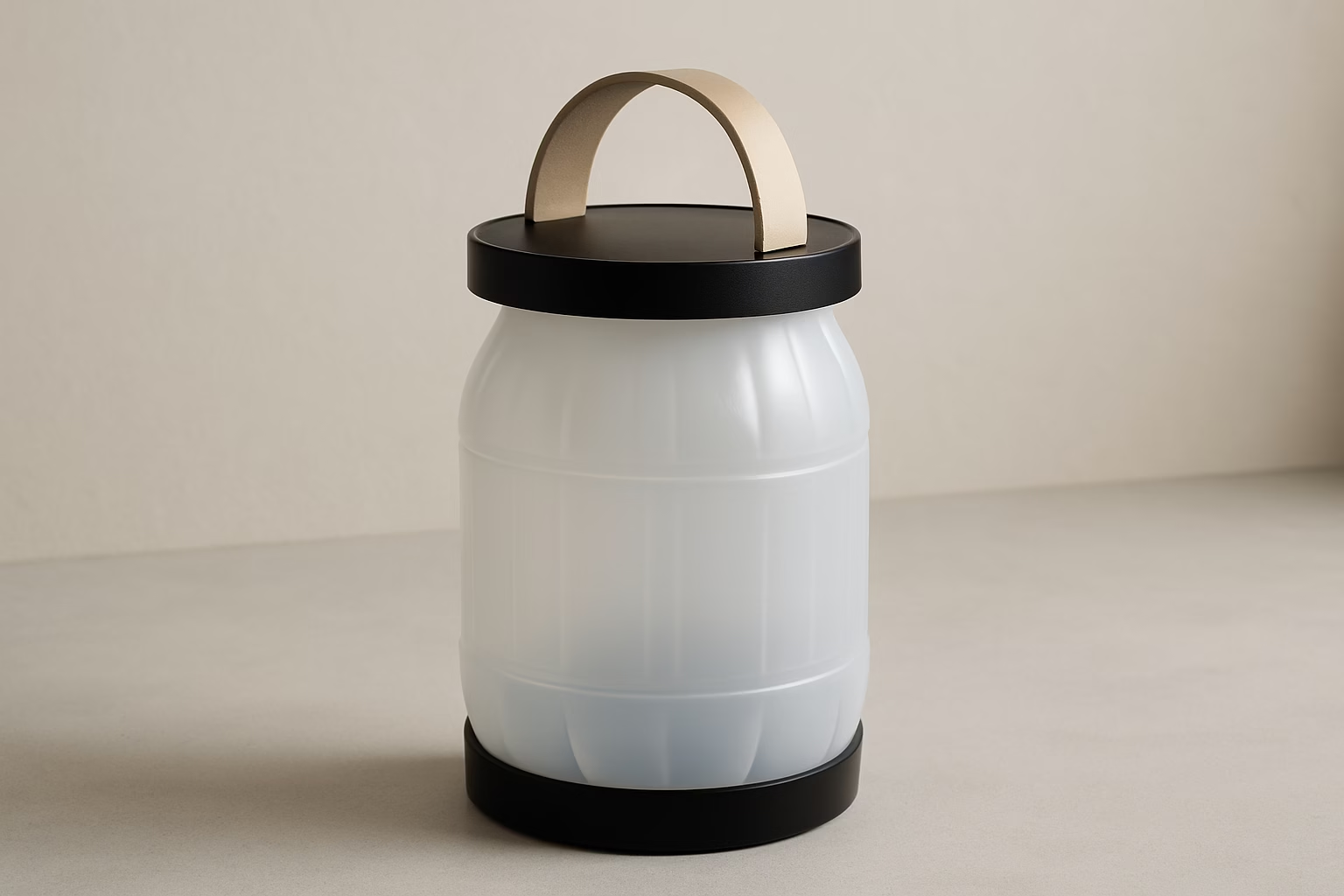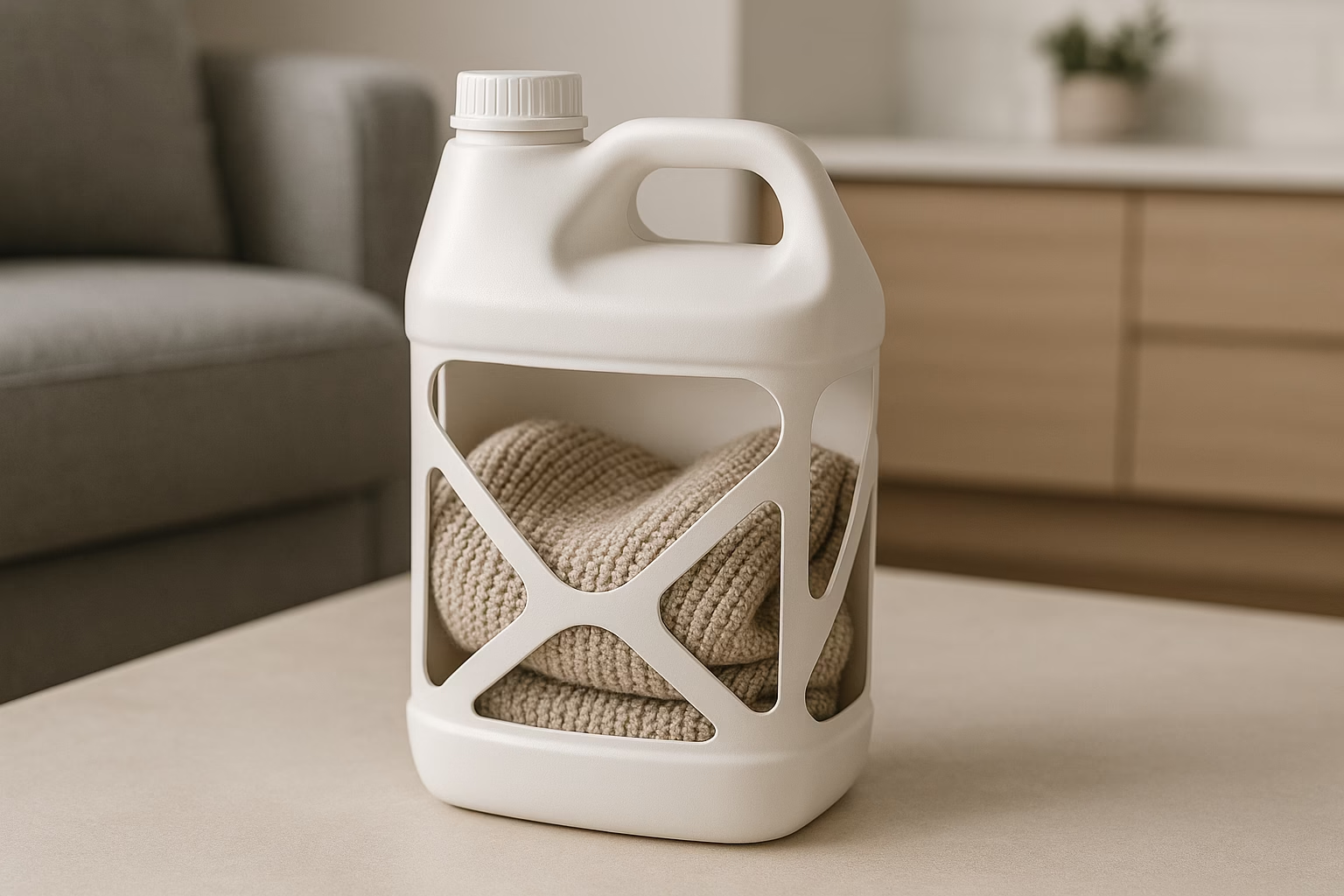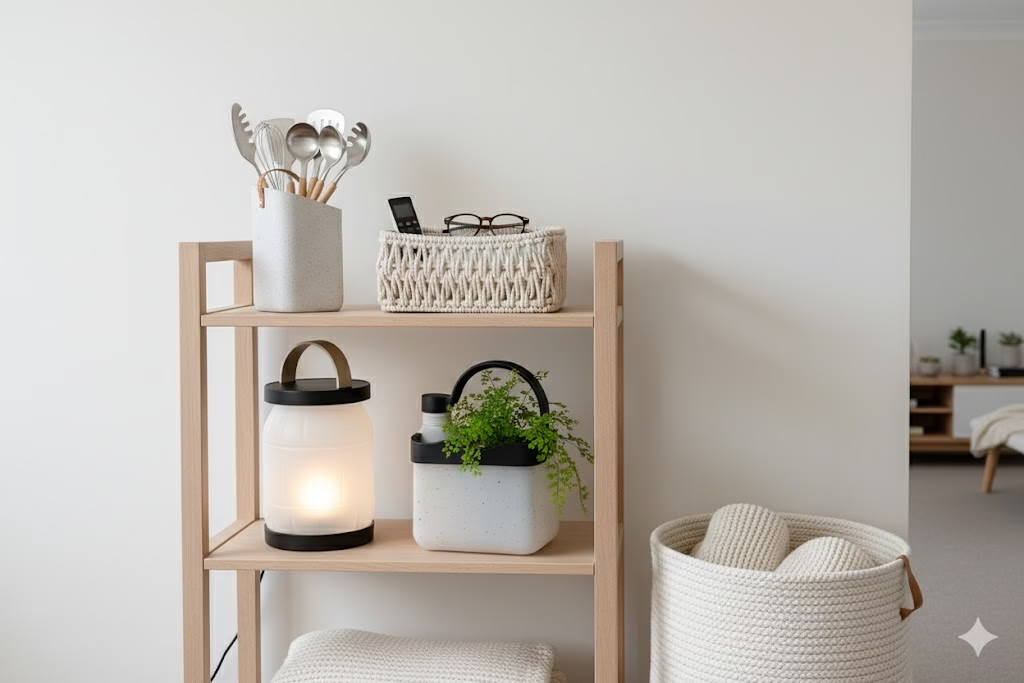
As a busy individual who’s always looking for ways to make healthy eating both exciting and convenient, I’ve often found myself with that last half-loaf of whole grain bread, wondering how to give it new life. No one wants to waste good food, especially when it’s as nutritious as whole grain bread. Join me as I share some of my favorite, healthy, and incredibly versatile uses for this kitchen staple, ensuring no slice ever goes to waste again!
Introduction: The Unsung Hero of Healthy Eating

Whole grain bread is more than just a vehicle for sandwiches; it’s a powerhouse of nutrition, packed with fiber, essential vitamins, and minerals. Yet, many of us often relegate it to the same few uses, sometimes even letting a few slices go stale before we can finish the loaf. What if I told you that your trusty whole grain bread could be the star of countless healthy, delicious, and incredibly creative meals? This article will dive deep into five ultimate ways to utilize whole grain bread, transforming it from a simple pantry item into a versatile ingredient that elevates your culinary game. Say goodbye to food waste and hello to a world of wholesome possibilities!
The beauty of whole grain bread lies not only in its nutritional profile but also in its adaptability. Its hearty texture and slightly nutty flavor make it an excellent base for both sweet and savory dishes. From breakfast to dinner, and even as a healthy snack, whole grain bread can be reinvented in ways you might never have imagined. We’ll explore innovative recipes that are not only good for you but also bursting with flavor, proving that healthy eating doesn’t have to be boring or repetitive. So, grab your loaf of whole grain bread, and let’s embark on a journey to unlock its full potential!
1. Breakfast Casserole or Strata: A Wholesome Morning Marvel
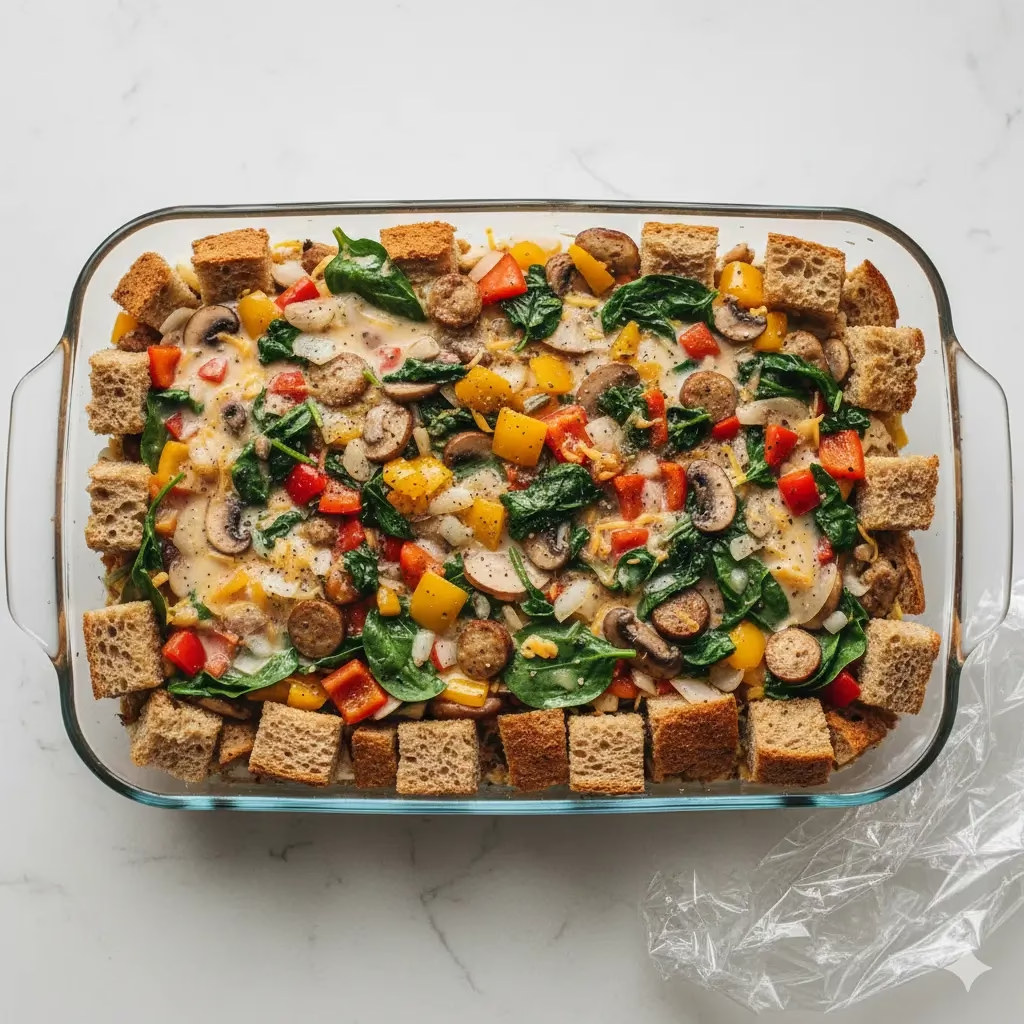
Kickstart your day with a nutritious and satisfying meal that can be prepared ahead of time, making your mornings a breeze. A whole grain bread breakfast casserole, also known as a strata, is the ultimate solution for busy individuals or anyone looking to enjoy a wholesome and hearty breakfast without the fuss. This dish combines the goodness of whole grain bread with eggs, cheese, milk, and an array of your favorite healthy vegetables and lean meats, creating a balanced and flavorful start to your day.
Why it’s healthy: Whole grain bread provides complex carbohydrates for sustained energy and fiber for digestive health. Eggs are a fantastic source of protein, and incorporating plenty of vegetables boosts your intake of vitamins, minerals, and antioxidants. Using low-fat cheese and lean protein options keeps the dish healthy and satisfying.
How to do it:
Ingredients:
- 8-10 slices of whole grain bread, cut into 1-inch cubes (stale bread works best!)
- 1 tablespoon olive oil
- A cup chopped bell peppers (any color)
- 1 cup chopped spinach or kale
- 1/2 cup chopped onion
- Half a cup chopped mushrooms
- 1/2 cup cooked lean protein (e.g., diced chicken sausage, turkey bacon, or vegetarian crumbles)
- 8 large eggs
- 1.5 cups milk (dairy or unsweetened almond milk)
- 1/2 teaspoon salt
- 1/4 teaspoon black pepper
- 1/2 cup shredded low-fat cheddar cheese or mozzarella
- Optional: a pinch of red pepper flakes for a kick, fresh herbs like chives or parsley for garnish
Instructions:
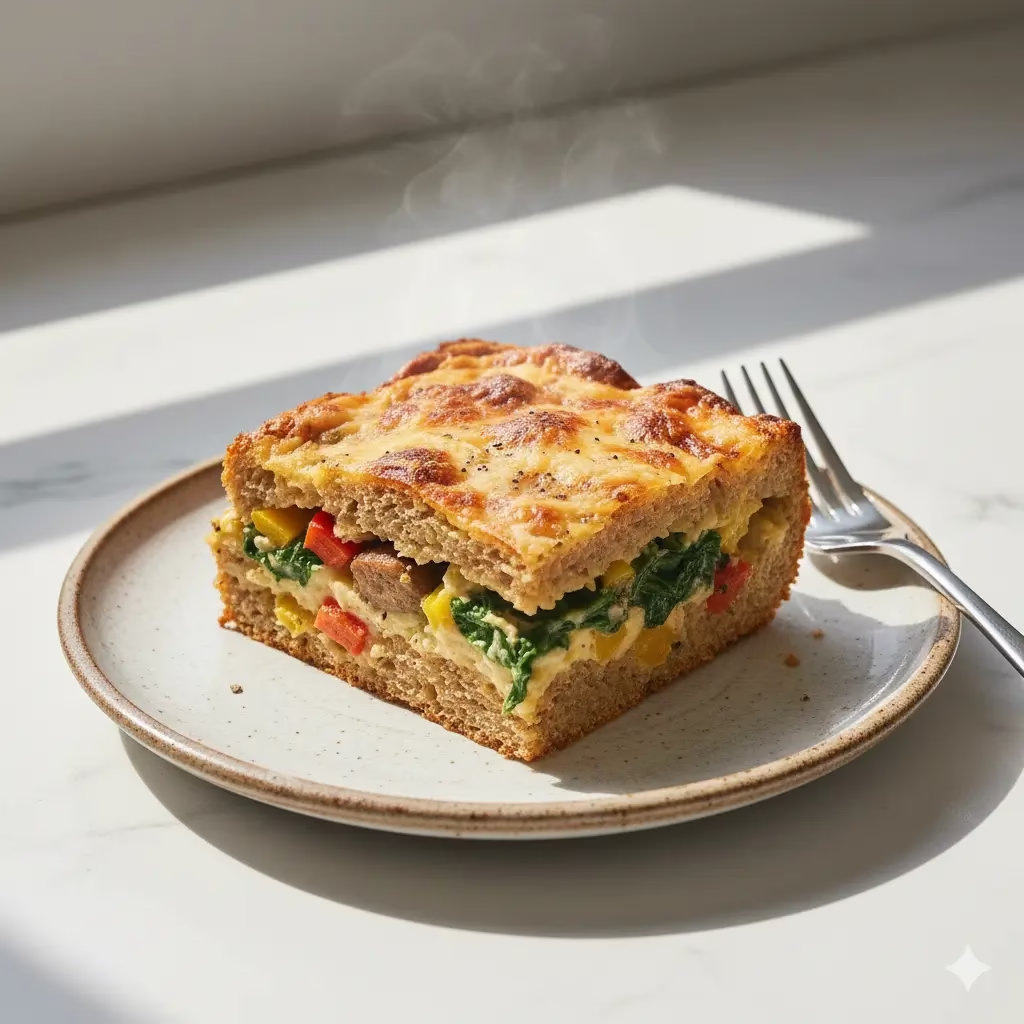
- Prepare the bread: Lightly toast the whole grain bread cubes if they are fresh, or use stale bread directly. This helps them absorb the egg mixture without becoming soggy. Arrange the bread cubes evenly in a greased 9×13 inch baking dish.
- Sauté vegetables: In a large skillet, heat olive oil over medium heat. Add bell peppers, onion, and mushrooms, and sauté until softened, about 5-7 minutes. Stir in the spinach or kale until wilted.
- Layer the casserole: Sprinkle the sautéed vegetables and cooked lean protein evenly over the bread cubes in the baking dish.
- Whisk the egg mixture: In a large bowl, whisk together the eggs, milk, salt, and pepper until well combined.
- Pour and soak: Pour the egg mixture evenly over the bread and vegetable layers. Gently press down on the bread to ensure all cubes are saturated.
- Refrigerate: Cover the baking dish with plastic wrap and refrigerate for at least 4 hours, or preferably overnight. This allows the bread to fully absorb the egg mixture, resulting in a more flavorful and cohesive casserole.
- Bake: Preheat your oven to 375°F (190°C). Remove the casserole from the refrigerator about 30 minutes before baking. Sprinkle with shredded cheese.
- Cook until golden: Bake for 45-55 minutes, or until the casserole is puffed, golden brown, and a knife inserted into the center comes out clean.
- Serve: Let the casserole rest for a few minutes before slicing and serving. Garnish with fresh herbs if desired.
This breakfast casserole is not just delicious; it’s a fantastic way to utilize leftover whole grain bread and pack your morning meal with nutrients. It’s perfect for meal prepping and feeding a crowd!
2. Homemade Whole Grain Croutons: Crispy, Flavorful, and Never store-bought again!

Forget those store-bought croutons loaded with unhealthy oils and artificial flavors. Making your own whole grain croutons is incredibly simple, economical, and allows you to control the ingredients for a truly healthy and delicious outcome. These crispy bites are perfect for adding texture and flavor to salads, soups, and even as a healthy snack on their own.
Why it’s healthy: By making them at home, you use healthy fats like olive oil and natural seasonings, avoiding trans fats and excessive sodium often found in commercial versions. Whole grain bread maintains its fiber content, making these croutons a far superior choice.
How to do it:
Ingredients:
- 4-6 slices of whole grain bread, preferably slightly stale, cut into 1/2-inch cubes
- 2 tablespoons extra virgin olive oil
- 1/2 teaspoon garlic powder
- 1/2 teaspoon dried oregano
- 1/4 teaspoon dried basil
- Salt and black pepper to taste
- Optional: a pinch of red pepper flakes for heat, grated Parmesan cheese (add after baking if desired)
Instructions:
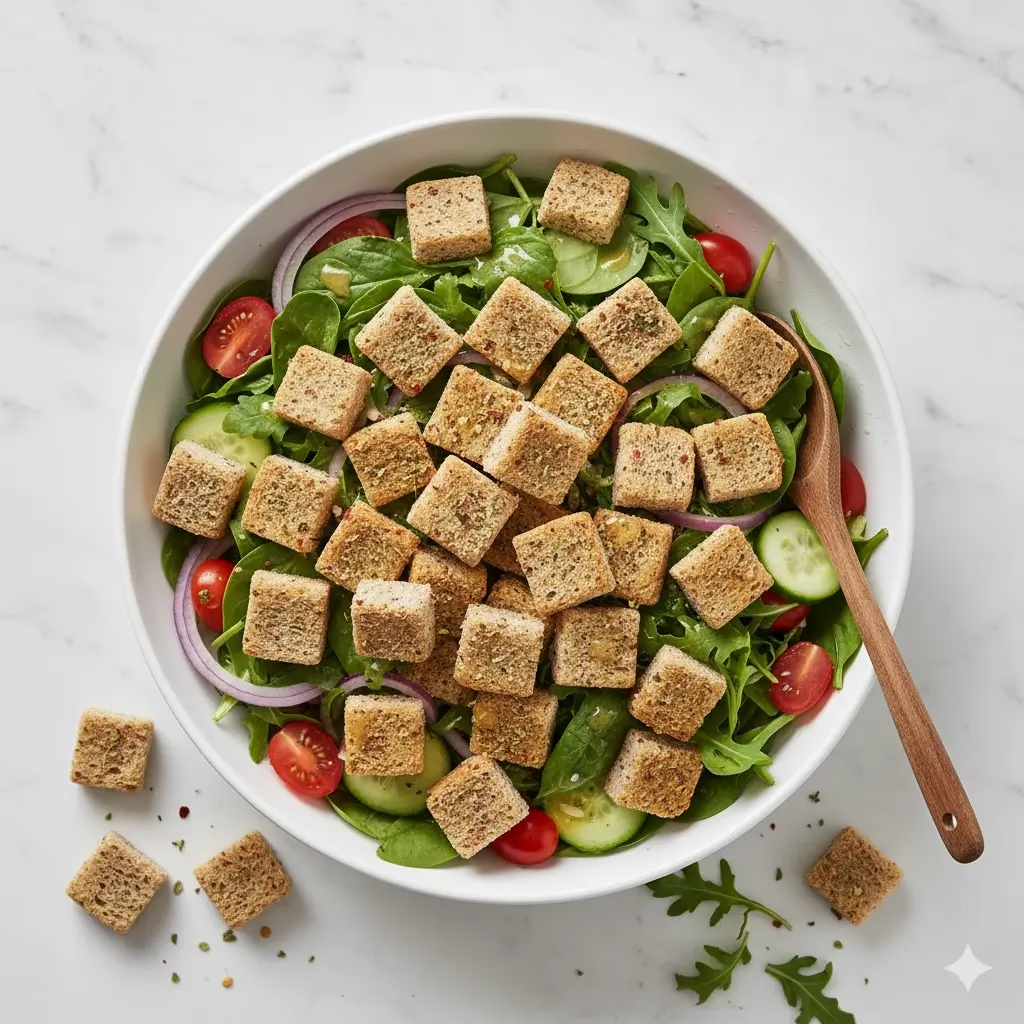
- Preheat oven: Preheat your oven to 350°F (175°C).
- Prepare bread: Cut your whole grain bread into uniform 1/2-inch cubes. Stale bread works best as it’s less likely to become soggy.
- Season: In a large bowl, drizzle the bread cubes with olive oil. Toss gently to ensure all cubes are lightly coated.
- Add spices: Sprinkle with garlic powder, oregano, basil, salt, and pepper. Toss again until the seasonings are evenly distributed.
- Bake: Spread the seasoned bread cubes in a single layer on a baking sheet.
- Toast to perfection: Bake for 10-15 minutes, tossing once halfway through, until the croutons are golden brown and crispy. Keep a close eye on them to prevent burning, as oven temperatures can vary.
- Cool and store: Let the croutons cool completely on the baking sheet. They will become even crispier as they cool. Store in an airtight container at room temperature for up to a week.
These homemade whole grain croutons are a game-changer for any salad or soup, providing that satisfying crunch and a burst of flavor without any unhealthy additives.
3. Savory Whole Grain Stuffing or Dressing: The Heart of Your Healthy Feast

Stuffing or dressing made with whole grain bread offers a healthier twist on a classic comfort food. Often associated with holiday meals, this versatile dish can be enjoyed year-round as a wholesome side or even a light meal. Using whole grain bread adds a deeper flavor profile and a significant boost of fiber compared to traditional white bread stuffings.
Why it’s healthy: Whole grain bread provides complex carbohydrates and fiber, making the dish more filling and promoting digestive health. By loading it with plenty of vegetables like onions, celery, and herbs, you increase its nutrient density. Using low-sodium broth and healthy fats like olive oil further enhances its health benefits.
How to do it:
Ingredients:
- 10-12 slices of whole grain bread, cut into 1-inch cubes (stale bread is ideal)
- 2 tablespoons olive oil or butter
- 1 cup chopped yellow onion
- 1 cup chopped celery
- 1/2 cup chopped carrots
- 2 cloves garlic, minced
- 1 teaspoon dried sage
- 1/2 teaspoon dried thyme
- 1/4 teaspoon black pepper
- 1/2 teaspoon salt
- 2 cups low-sodium vegetable or chicken broth
- 1/4 cup chopped fresh parsley
- Optional: 1/2 cup chopped apples for a touch of sweetness, or cooked mushrooms for added umami
Instructions:
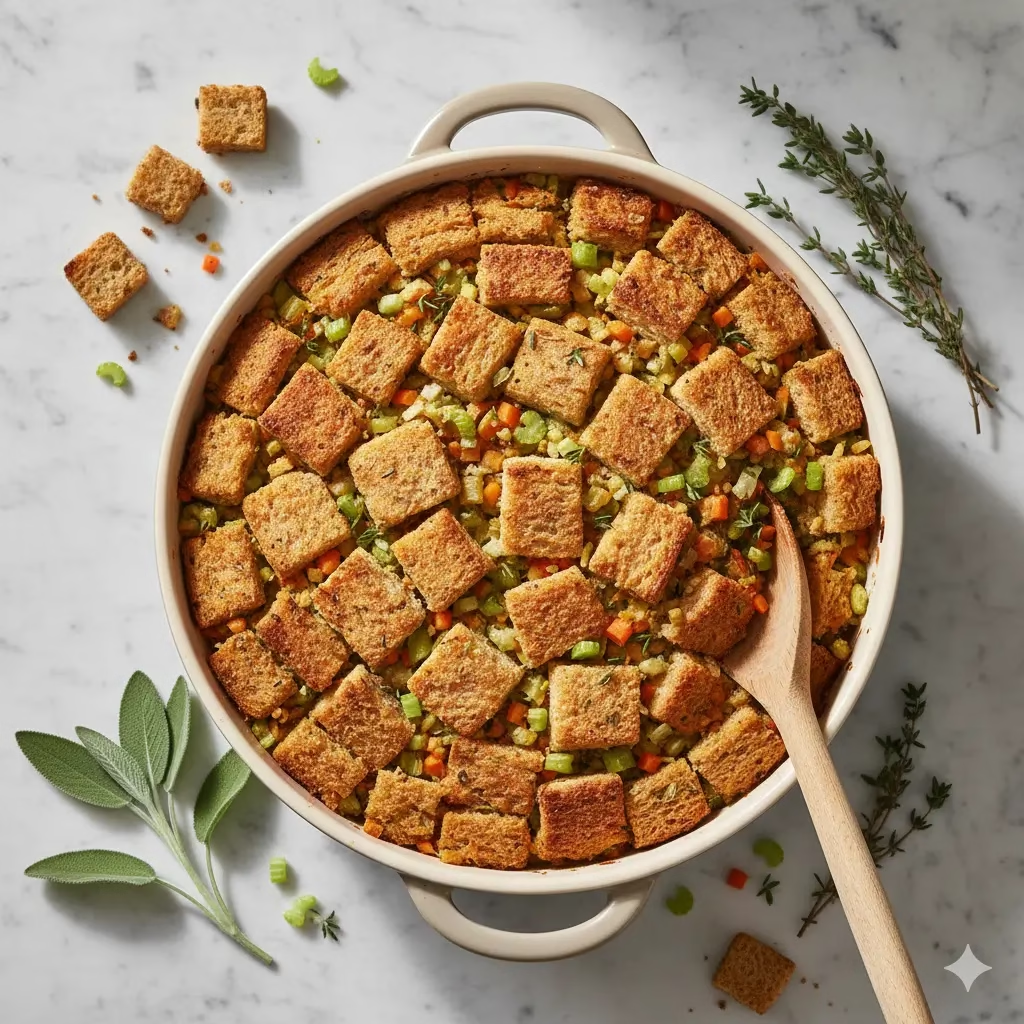
- Preheat and toast (optional): Preheat your oven to 350°F (175°C). If your bread is fresh, spread the cubes on a baking sheet and bake for 10-15 minutes until lightly toasted and dried out. If using stale bread, you can skip this step.
- Sauté aromatics: In a large skillet or Dutch oven, melt olive oil or butter over medium heat. Add onion, celery, and carrots and sauté until softened, about 8-10 minutes.
- Add garlic and herbs: Stir in the minced garlic, dried sage, dried thyme, salt, and pepper. Cook for another 1-2 minutes until fragrant.
- Combine ingredients: In a large bowl, combine the toasted whole grain bread cubes with the sautéed vegetable mixture. Add the fresh parsley and optional apples or mushrooms.
- Moisten with broth: Gradually pour in the low-sodium broth, tossing gently until the bread cubes are evenly moistened. You might not need all the broth, depending on the dryness of your bread. The mixture should be moist but not soggy.
- Transfer to baking dish: Transfer the stuffing mixture to a greased 9×13 inch baking dish.
- Bake: Cover the baking dish with foil and bake for 30 minutes.
- Brown: Remove the foil and bake for an additional 15-20 minutes, or until the top is golden brown and crispy.
- Serve: Let rest for a few minutes before serving.
This whole grain stuffing is a comforting and wholesome addition to any meal, providing a healthy dose of fiber and flavor.
4. Baked “Chips”: Your Healthy Dipping Companion
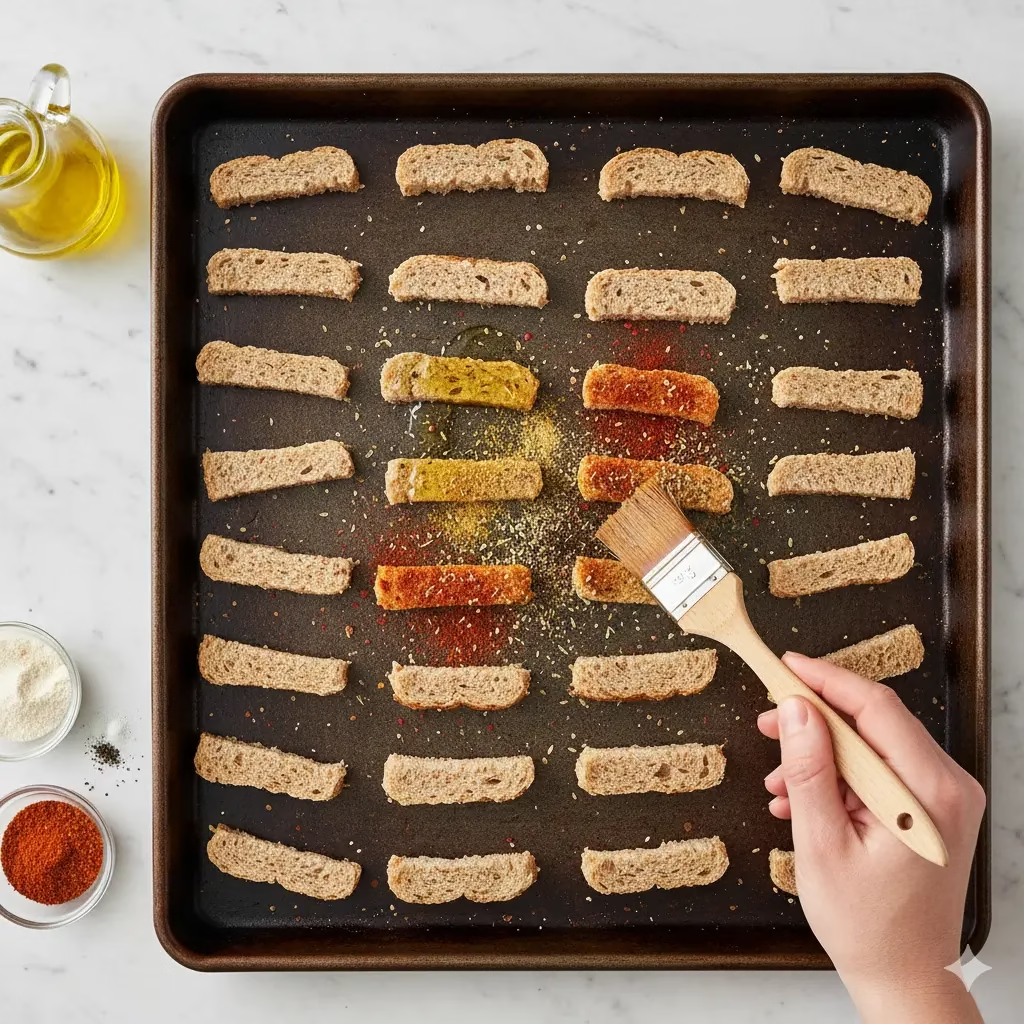
Looking for a healthy alternative to fried potato chips? Whole grain bread can be transformed into incredibly satisfying and crispy baked “chips” that are perfect for dipping in hummus, guacamole, salsa, or any of your favorite healthy spreads. These are a fantastic way to use up leftover bread and create a guilt-free snack.
Why it’s healthy: This method eliminates deep-frying, significantly reducing unhealthy fats and calories. Whole grain bread provides complex carbohydrates and fiber, making these chips more filling and nutritious than many commercial snack options. You control the seasonings, avoiding excessive sodium and artificial additives.
How to do it:
Ingredients:
- 4-6 slices of whole grain bread
- 1-2 tablespoons extra virgin olive oil
- 1/2 teaspoon garlic powder
- 1/2 teaspoon paprika (smoked or sweet)
- 1/4 teaspoon onion powder
- Salt and black pepper to taste
- Optional: A pinch of cayenne pepper for heat, dried herbs like oregano or rosemary.
Instructions:
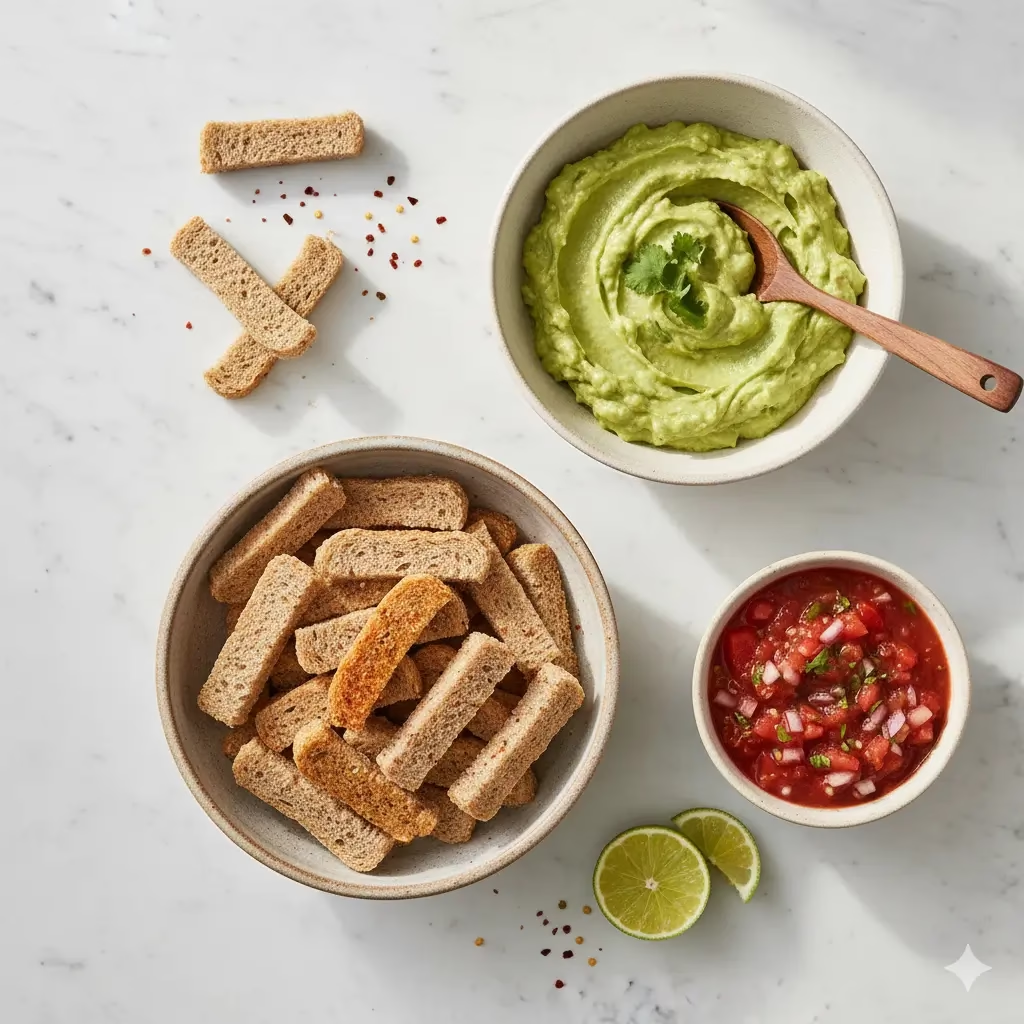
- Preheat oven: Preheat your oven to 375°F (190°C).
- Prepare bread: Cut the whole grain bread into very thin strips or triangles. The thinner the pieces, the crispier your “chips” will be.
- Season: In a medium bowl, toss the bread pieces with olive oil until lightly coated.
- Add spices: Sprinkle with garlic powder, paprika, onion powder, salt, and pepper. Toss again to ensure even distribution of seasonings.
- Bake: Spread the seasoned bread pieces in a single layer on a large baking sheet. Ensure they are not overcrowded, as this will prevent them from crisping evenly.
- Crisp to perfection: Bake for 8-12 minutes, flipping halfway through, until golden brown and crispy. Baking time will vary depending on the thickness of your bread and your oven. Watch them closely, as they can go from perfectly crisp to burnt very quickly.
- Cool and serve: Let the “chips” cool completely on the baking sheet. They will become even crispier as they cool. Serve immediately with your favorite healthy dips, or store in an airtight container for up to 3-4 days.
These baked whole grain bread chips are a versatile and healthy snack that satisfies your craving for crunch without compromising on your health goals.
5. Whole Grain Bread Pudding with Berries: A Guilt-Free Dessert
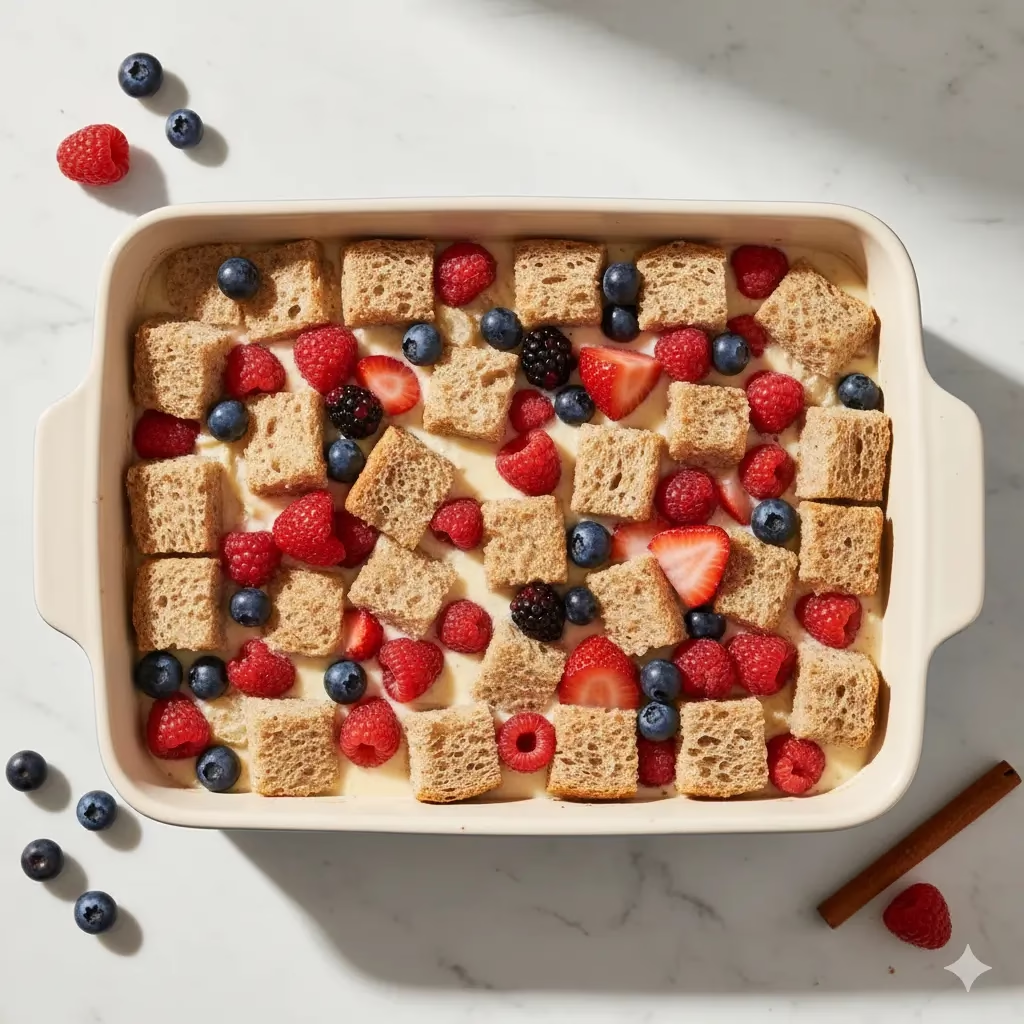
Who says whole grain bread can’t be used for dessert? This wholesome bread pudding takes a classic comfort dessert and gives it a healthy makeover. By using whole grain bread, less sugar, and plenty of fresh berries, you can enjoy a delicious and satisfying treat that’s rich in fiber and antioxidants.
Why it’s healthy: Whole grain bread provides the base with beneficial fiber. Reducing added sugar and incorporating natural sweetness from berries significantly lowers the glycemic load. Berries are packed with antioxidants, and using lower-fat milk and eggs provides protein and essential nutrients.
How to do it:
Ingredients:
- 6-8 slices of whole grain bread, cut into 1-inch cubes (slightly stale is great)
- 2 large eggs
- 1 large egg yolk
- 1.5 cups milk (dairy or unsweetened almond milk)
- 1/4 cup maple syrup or honey (adjust to taste)
- 1 teaspoon vanilla extract
- 1/2 teaspoon ground cinnamon
- Pinch of nutmeg
- 1 cup mixed fresh or frozen berries (strawberries, blueberries, raspberries)
- Optional: 1 tablespoon melted butter for greasing, a sprinkle of chopped nuts (almonds, walnuts) for topping
Instructions:
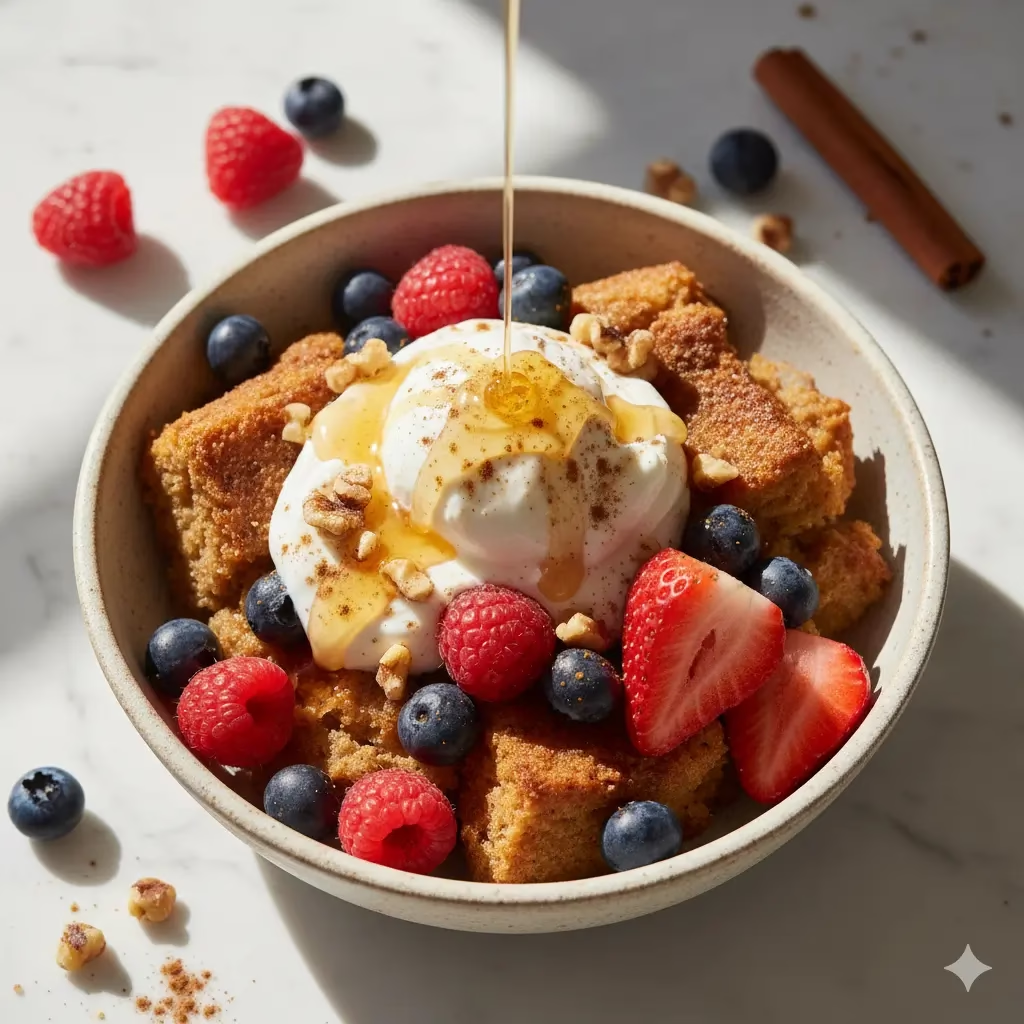
- Preheat oven: Preheat your oven to 350°F (175°C). Lightly grease an 8×8 inch baking dish.
- Arrange bread: Place the whole grain bread cubes evenly in the prepared baking dish.
- Whisk custard: In a large bowl, whisk together the eggs, egg yolk, milk, maple syrup (or honey), vanilla extract, cinnamon, and nutmeg until well combined.
- Soak bread: Pour the egg mixture evenly over the bread cubes. Gently press down on the bread to ensure all pieces are saturated. Let it sit for 15-20 minutes to allow the bread to absorb the custard.
- Add berries: Gently fold in the mixed berries.
- Bake: Bake for 35-45 minutes, or until the pudding is set, golden brown on top, and a knife inserted into the center comes out clean (it may still be slightly jiggly in the middle, which is fine).
- Cool and serve: Let the bread pudding cool slightly before serving. It’s delicious warm, perhaps with a dollop of Greek yogurt or a sprinkle of chopped nuts.
This whole grain bread pudding is a delightful and healthy way to satisfy your sweet tooth while enjoying the benefits of whole grains and fresh fruit.
Conclusion: Unleash the Power of Whole Grain Bread
As we’ve explored these five ultimate and healthy ways to use whole grain bread, it’s clear that this humble ingredient holds incredible potential beyond the usual sandwich. From a hearty breakfast casserole to crispy baked chips, and from savory stuffing to a delightful dessert, whole grain bread can be transformed into an array of nutritious and flavorful dishes. These recipes not only help reduce food waste but also elevate your cooking, proving that healthy eating can be both creative and incredibly satisfying.
Embracing these versatile uses for whole grain bread means you’re investing in your health, enjoying delicious meals, and making the most out of every loaf. So, the next time you find yourself with extra whole grain bread, don’t let it go to waste. Instead, view it as an opportunity to experiment, innovate, and bring wholesome goodness to your table. Your taste buds and your body will thank you!
FAQ
Q1: Can I use fresh whole grain bread for these recipes, or does it have to be stale?
A1: While stale whole grain bread is often preferred for recipes like croutons, stuffing, and breakfast casseroles because it absorbs liquids better without becoming soggy, you can absolutely use fresh bread. If using fresh bread, it’s often a good idea to lightly toast or dry it out in the oven first for about 10-15 minutes to achieve a similar effect.
Q2: How long can homemade whole grain croutons be stored?
A2: Homemade whole grain croutons can be stored in an airtight container at room temperature for up to a week. For optimal crispness, ensure they are completely cool before storing.
Q3: Can I freeze the whole grain breakfast casserole?
A3: Yes, the whole grain breakfast casserole freezes beautifully! After baking and cooling, you can cut it into individual portions and freeze them in airtight containers or freezer bags for up to 2-3 months. Thaw in the refrigerator overnight and reheat in the microwave or oven.
Q4: Are these “baked chips” suitable for weight loss?
A4: Yes, baked whole grain bread “chips” can be a great addition to a weight loss plan when consumed in moderation and paired with healthy dips. They are significantly lower in fat and calories than fried chips and provide beneficial fiber, which helps with satiety.
Q5: What are the benefits of using whole grain bread over white bread in these recipes?
A5: Whole grain bread offers numerous health benefits over white bread, including higher fiber content (aiding digestion and satiety), more essential nutrients like B vitamins, iron, magnesium, and selenium. It also has a lower glycemic index, meaning it causes a slower, steadier rise in blood sugar levels, which is better for sustained energy and blood sugar control.
References
- Nutrition Source – Whole Grains – The Nutrition Source
- Mayo Clinic – High-fiber foods – Nutrition and healthy eating
- Heart – Get to Know Grains: Why You Need Them
Recent Posts
